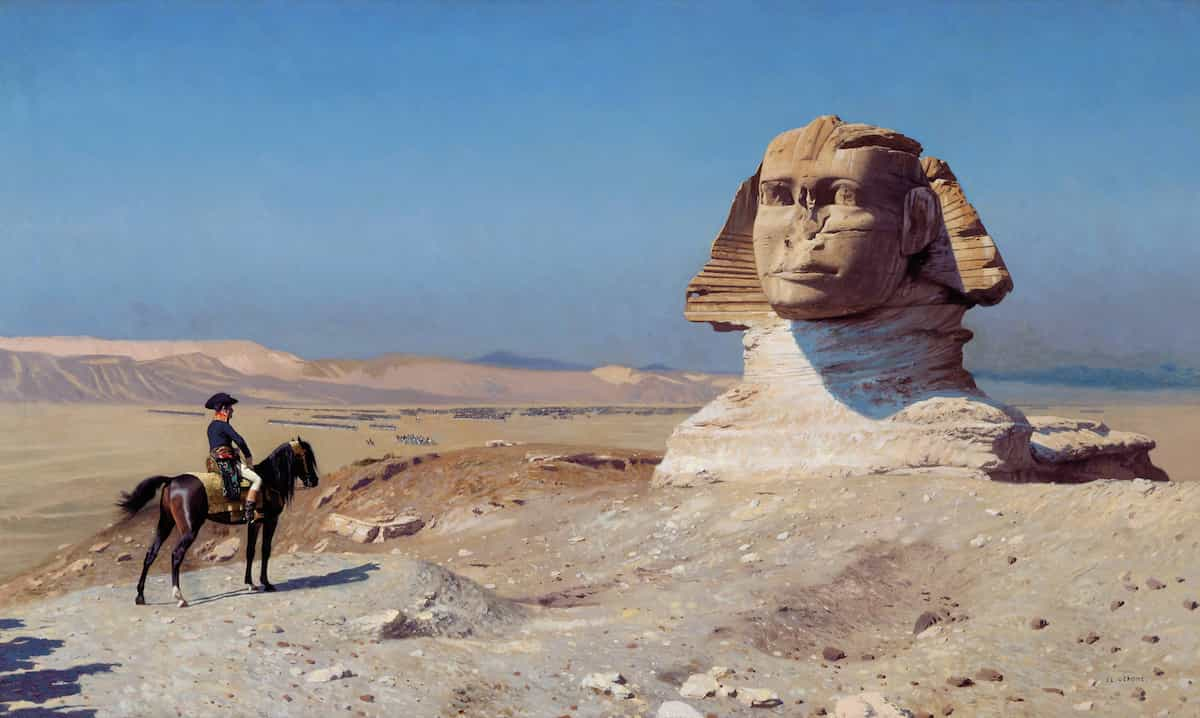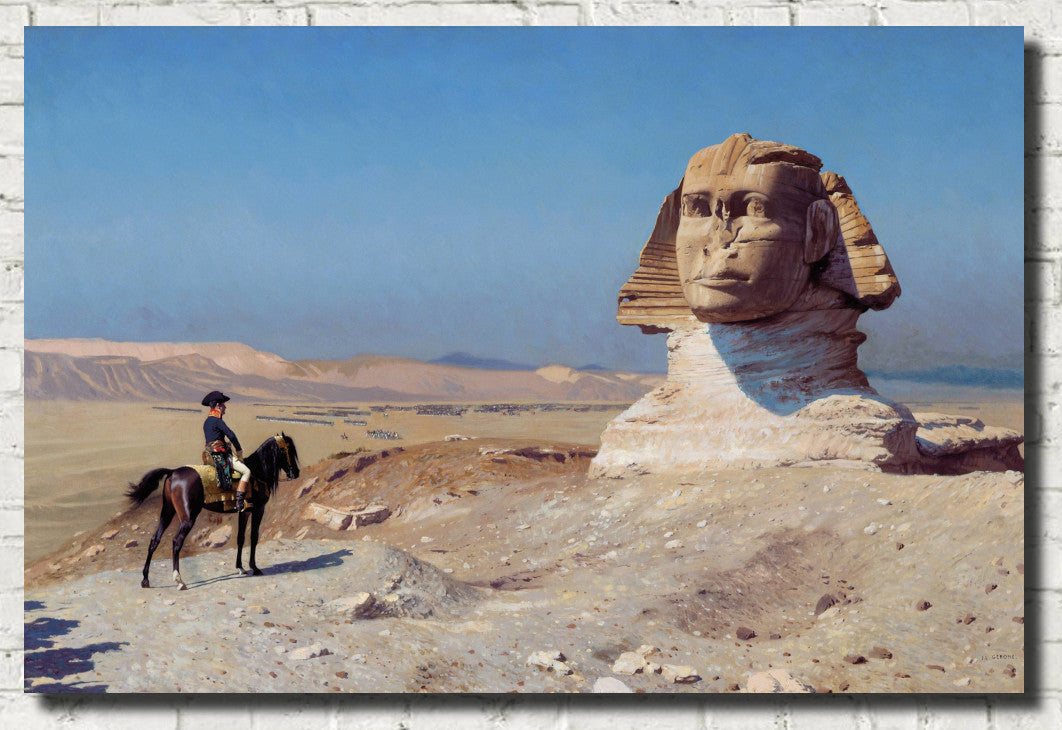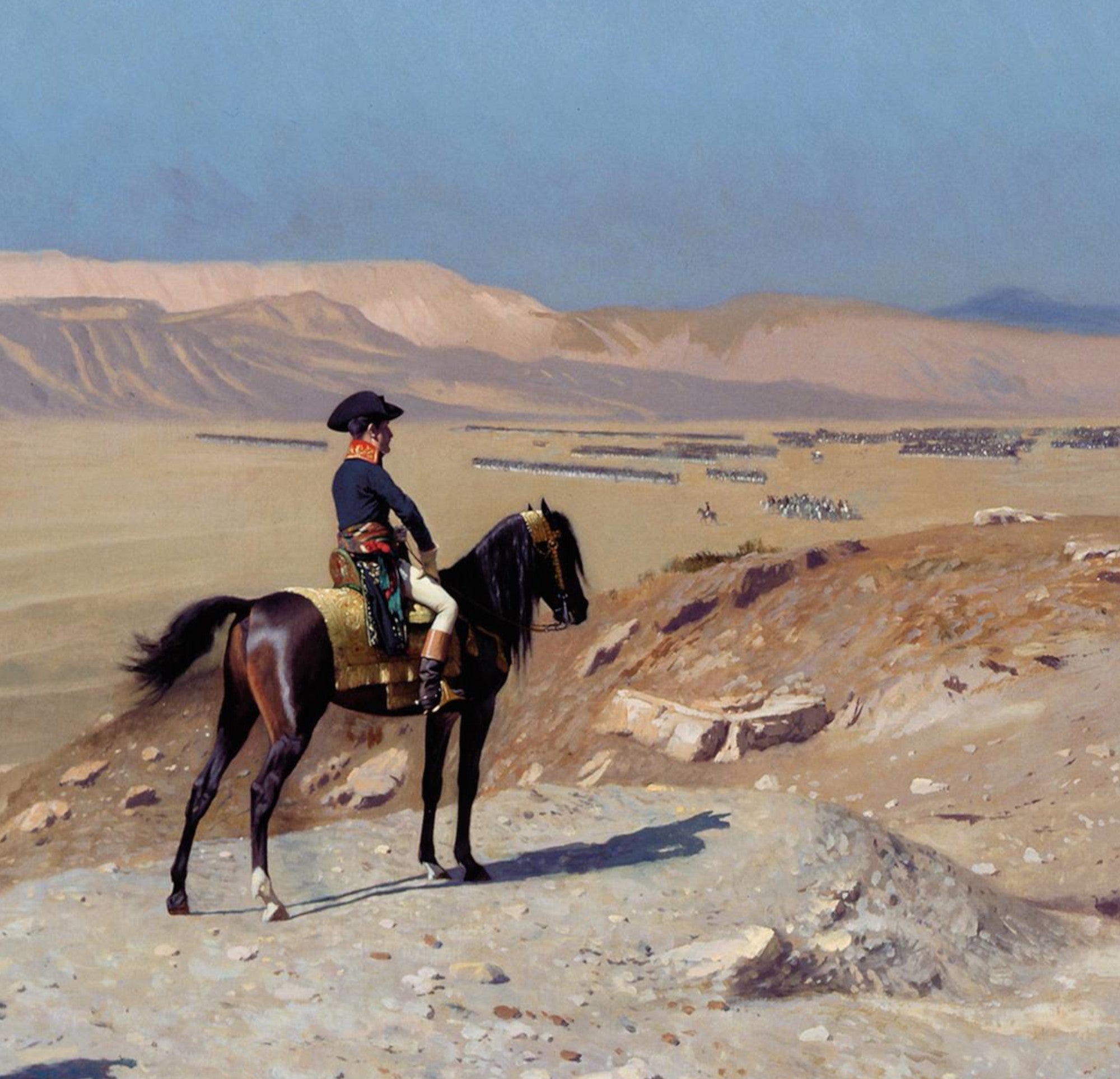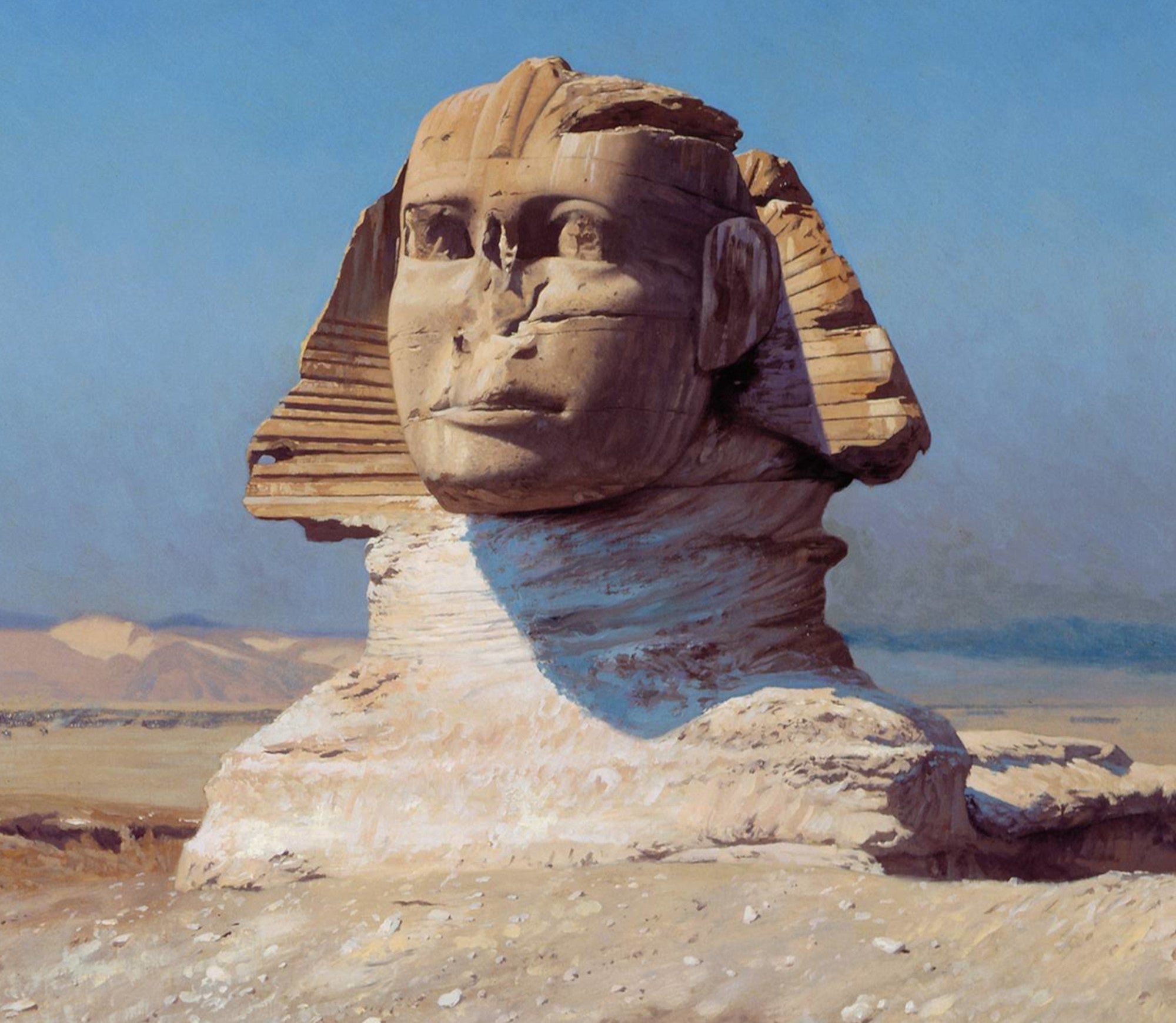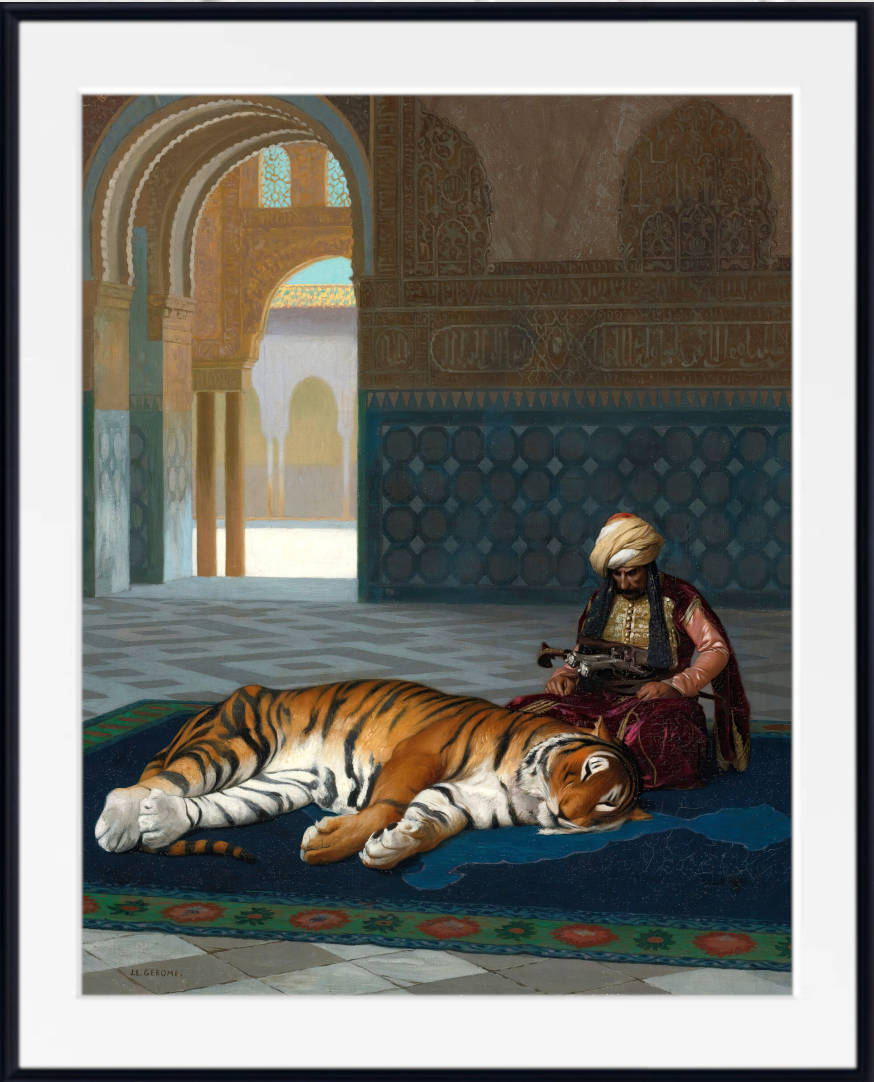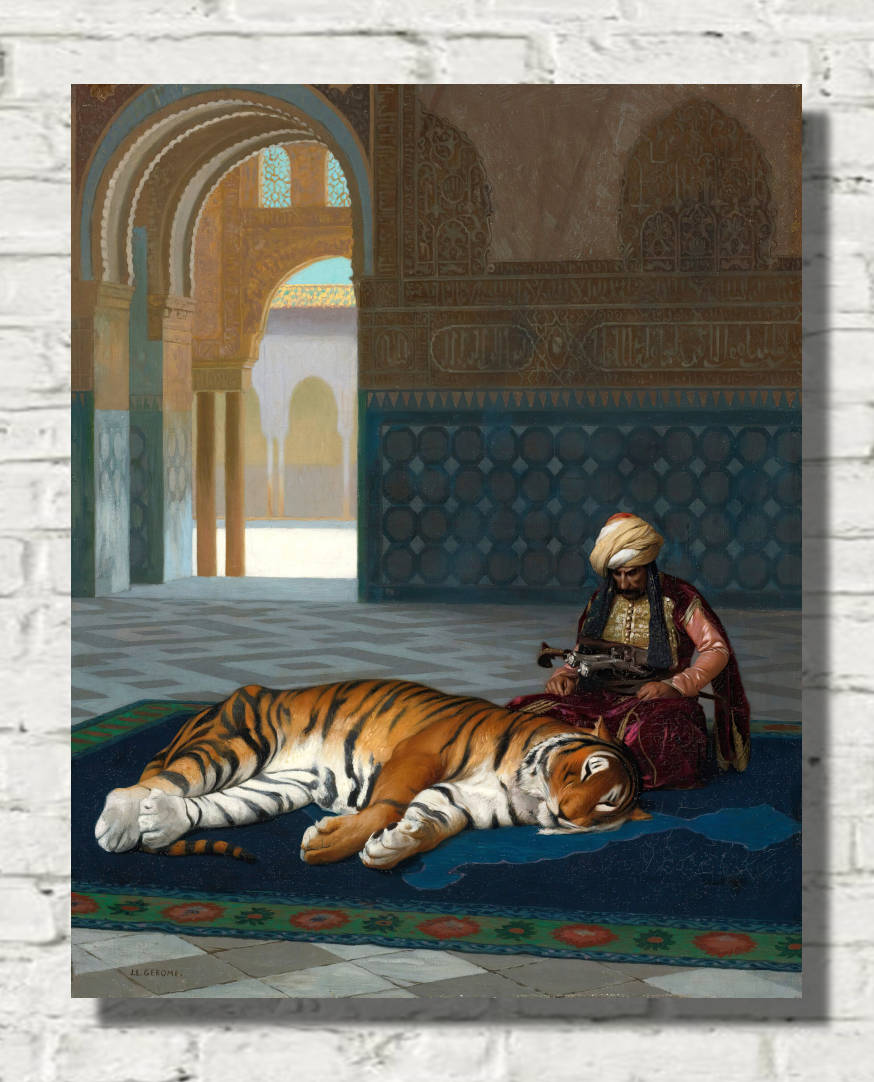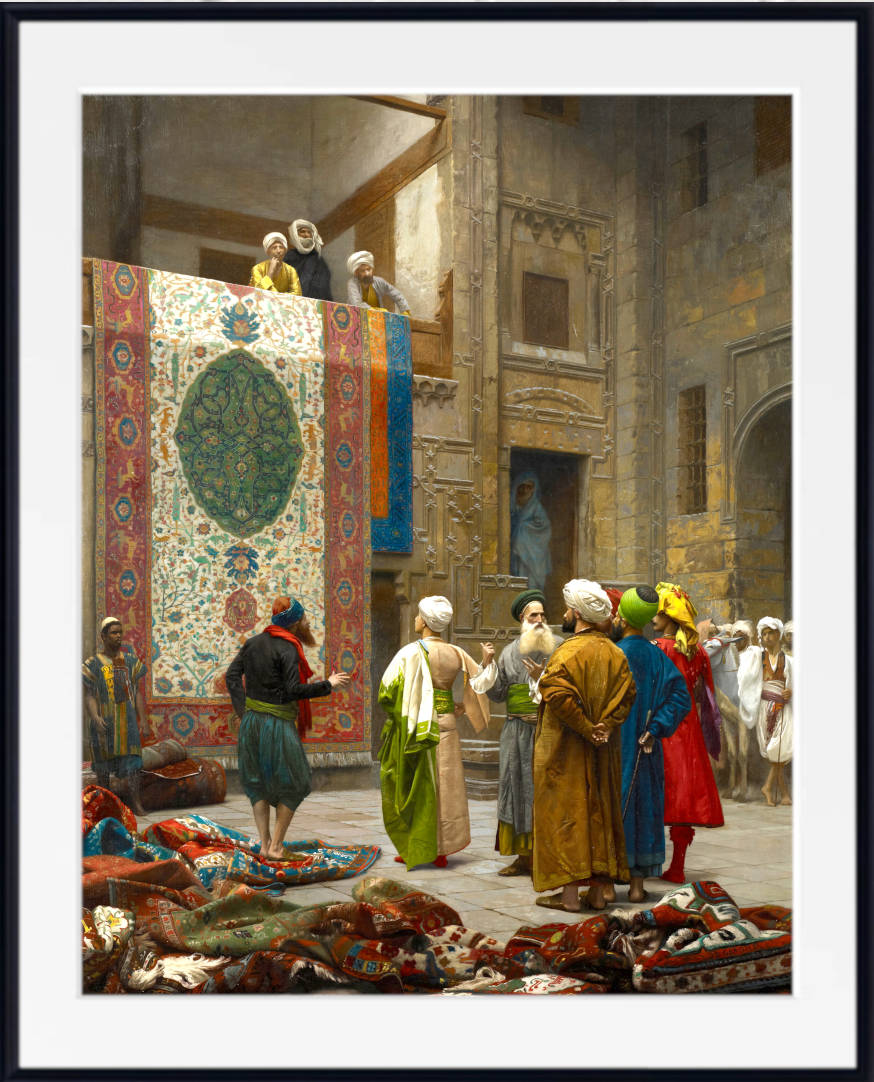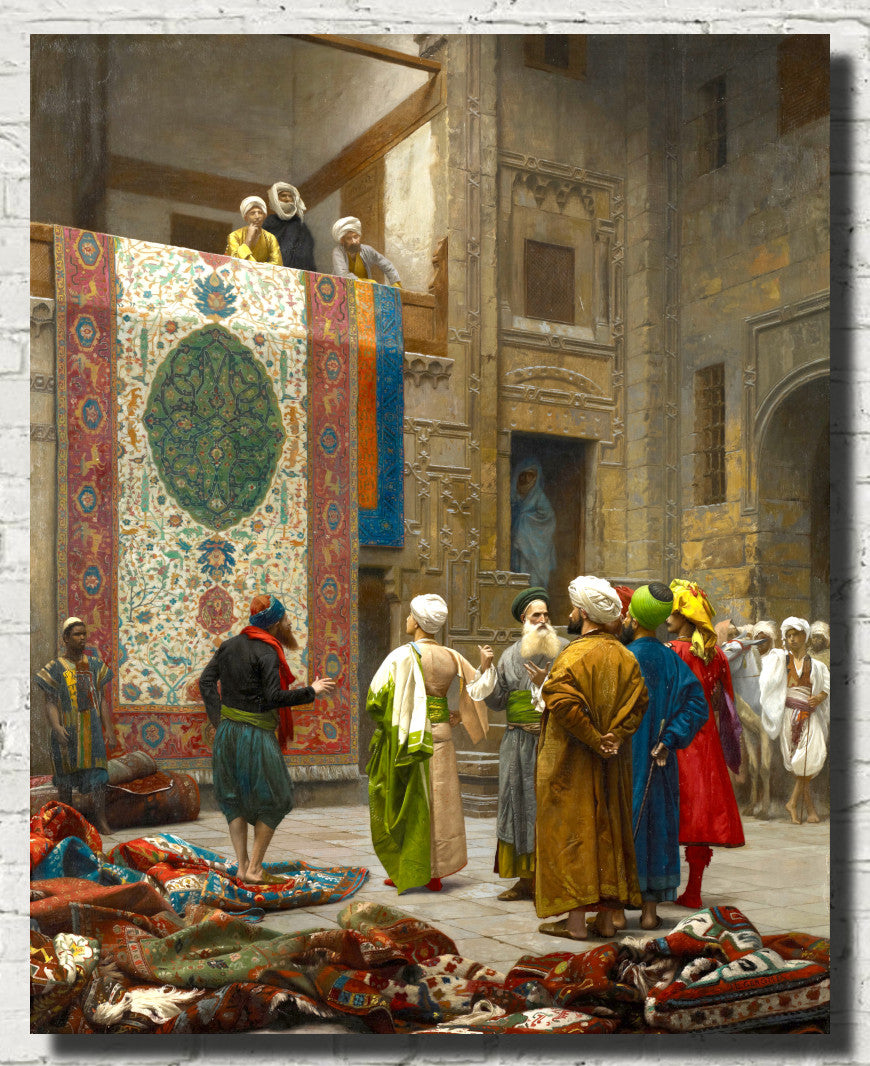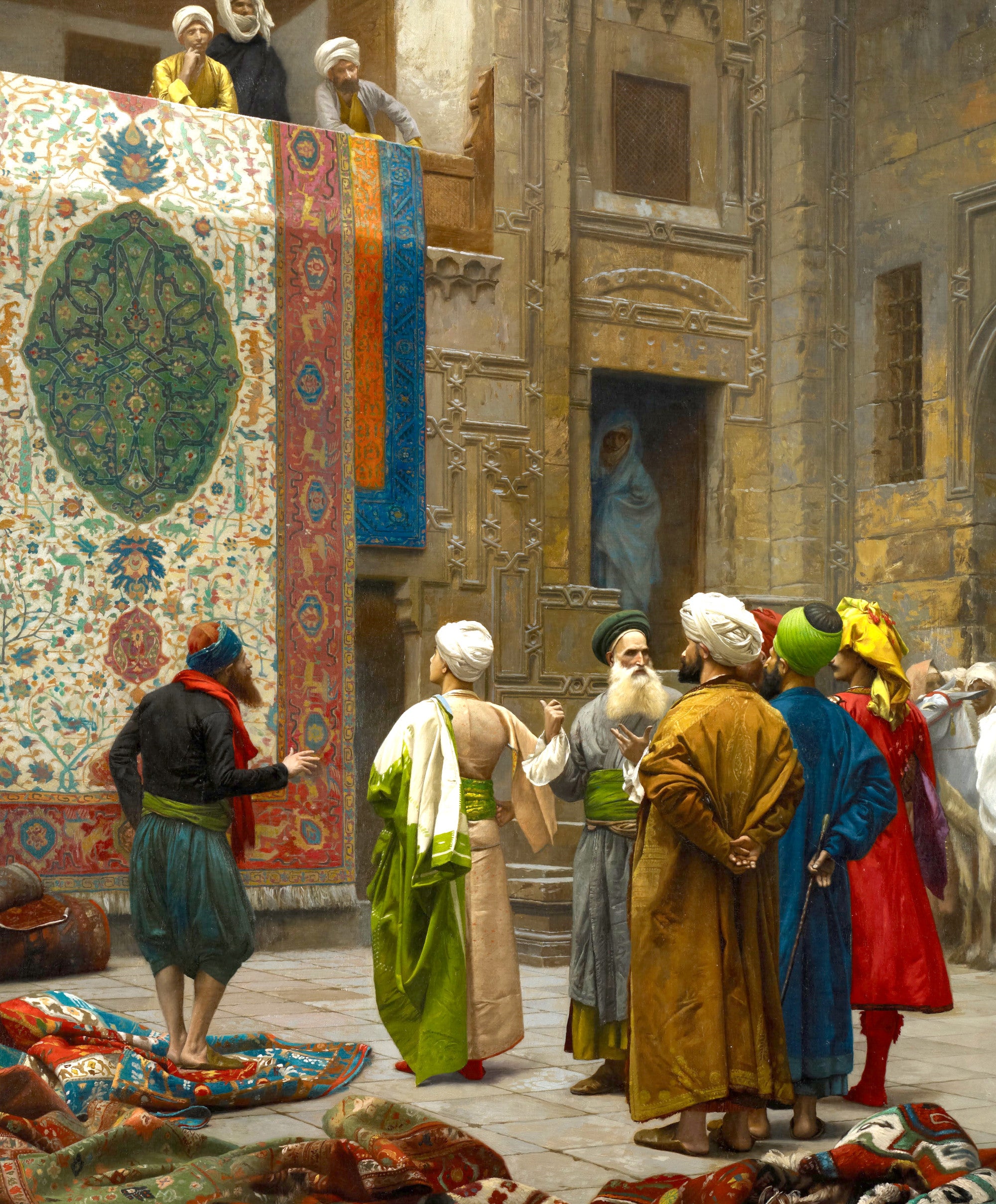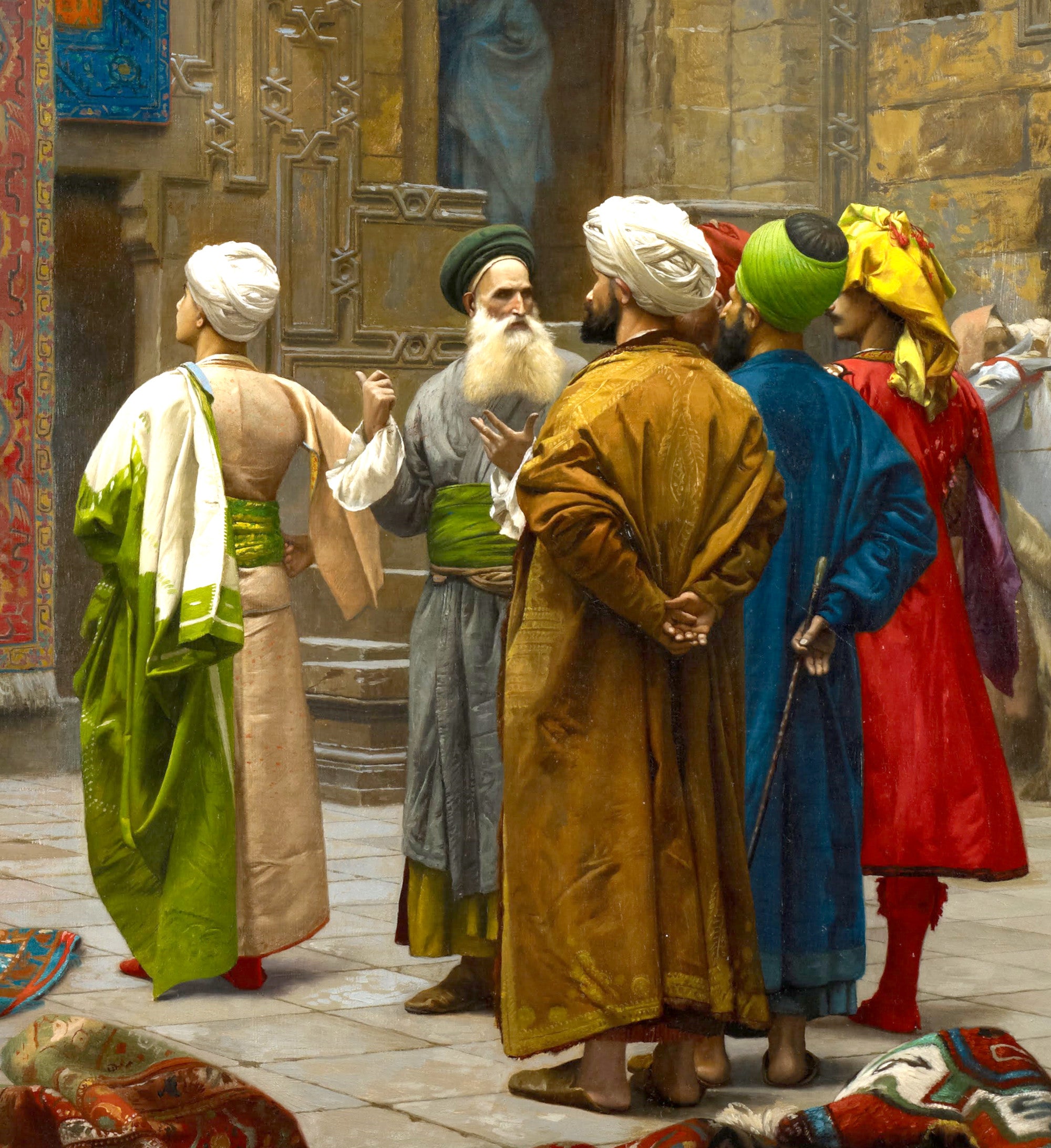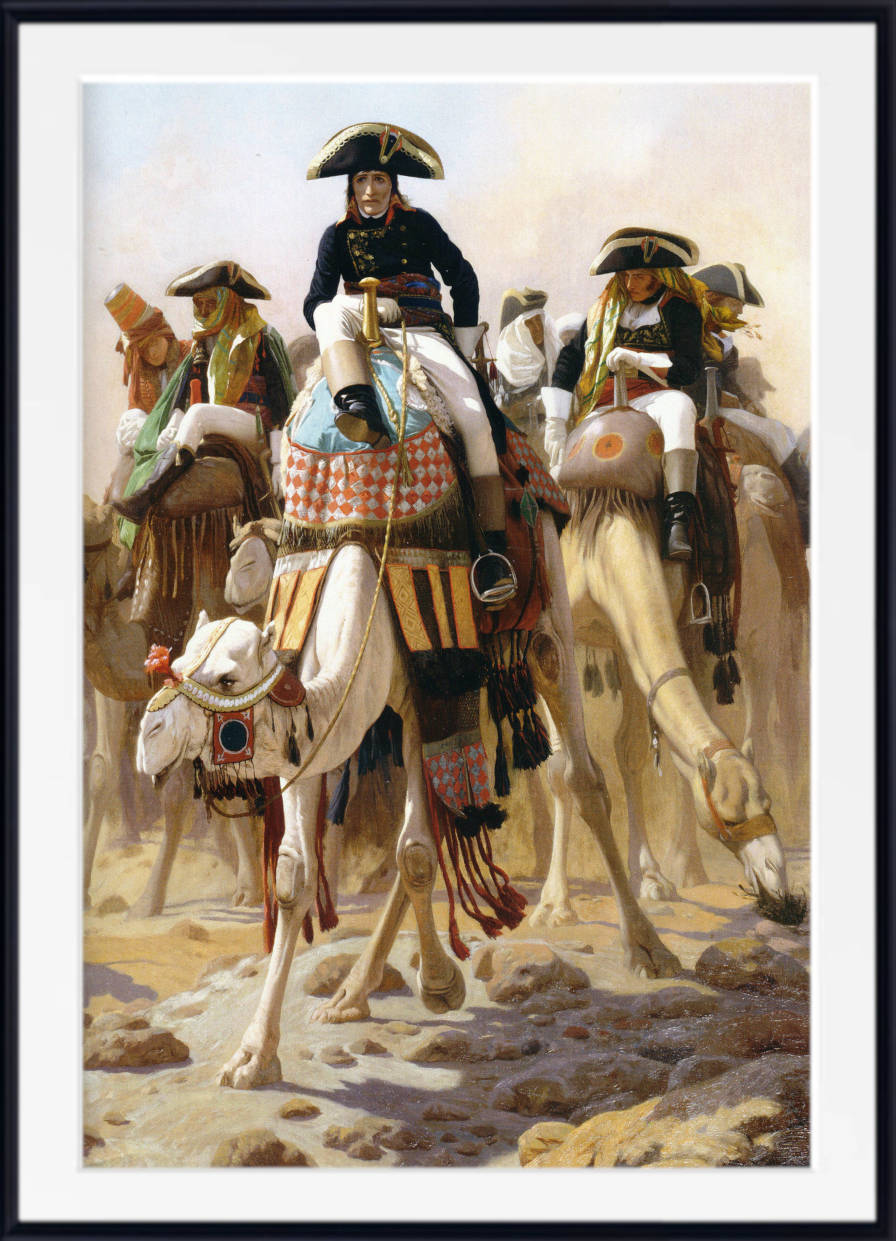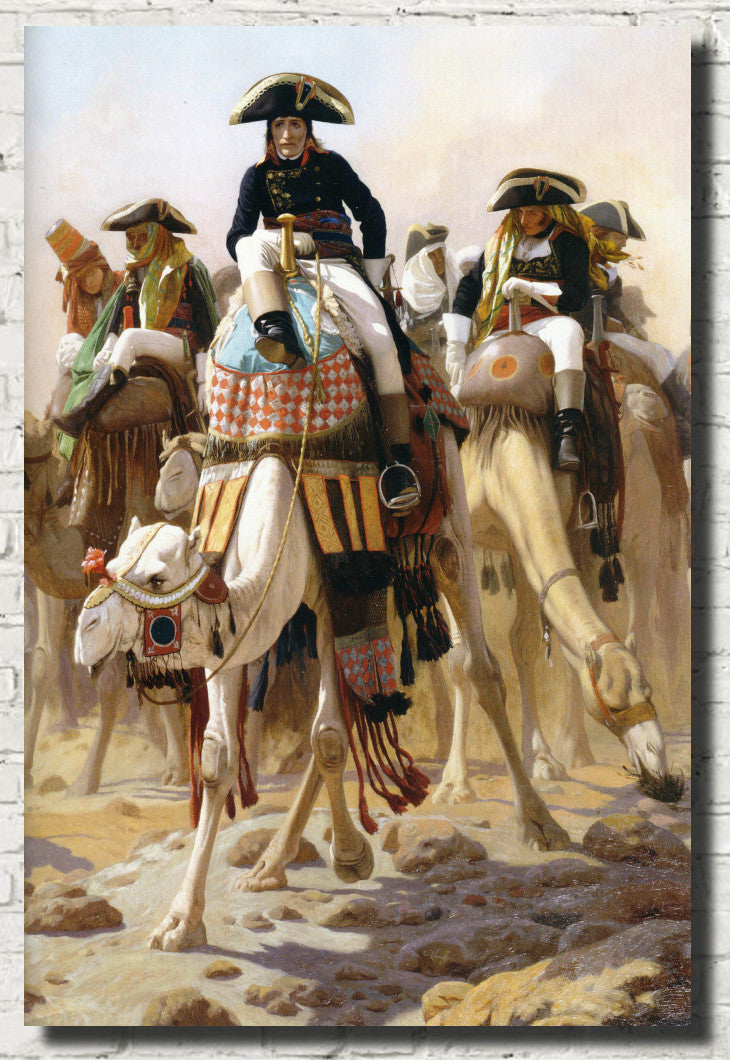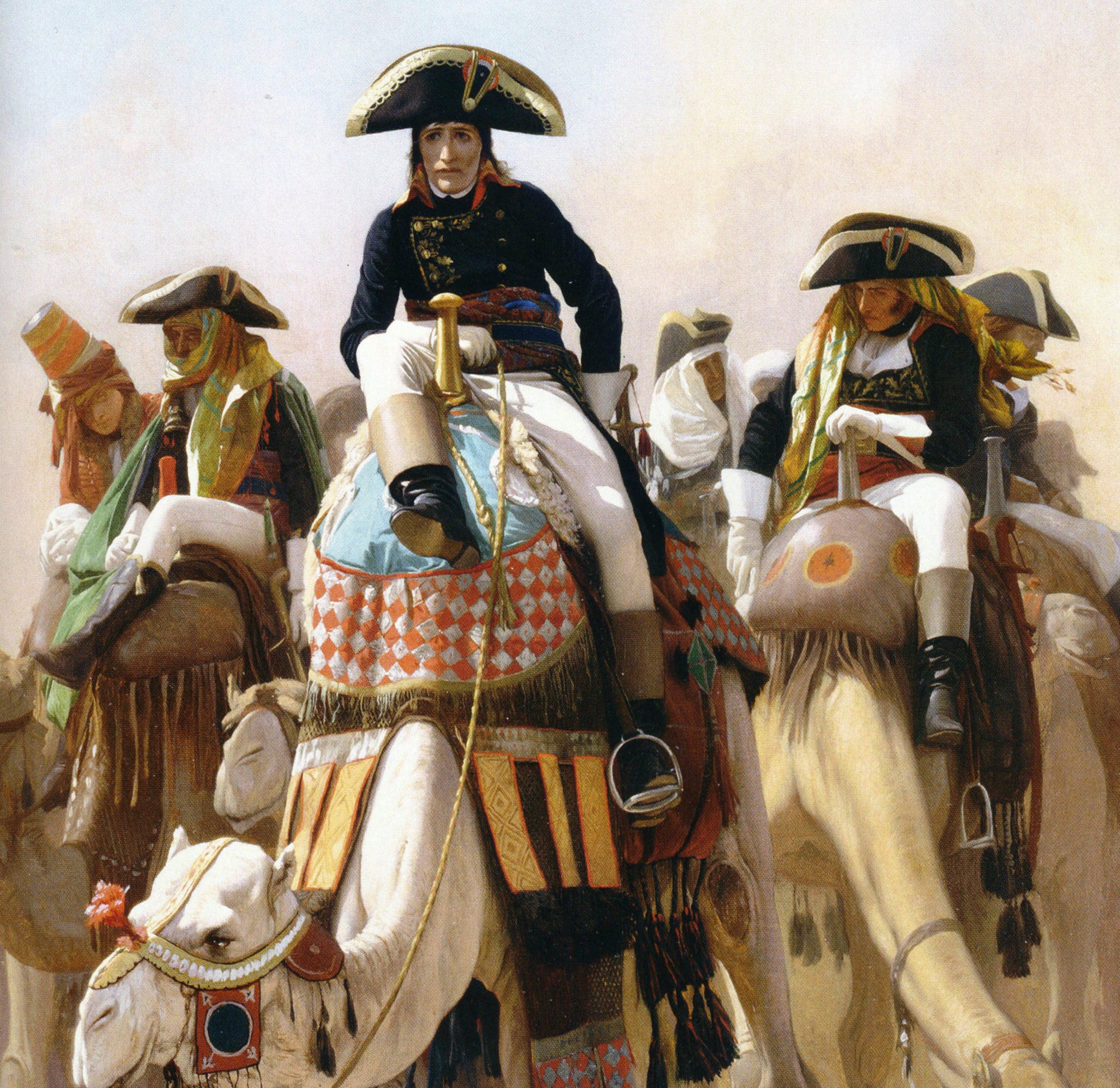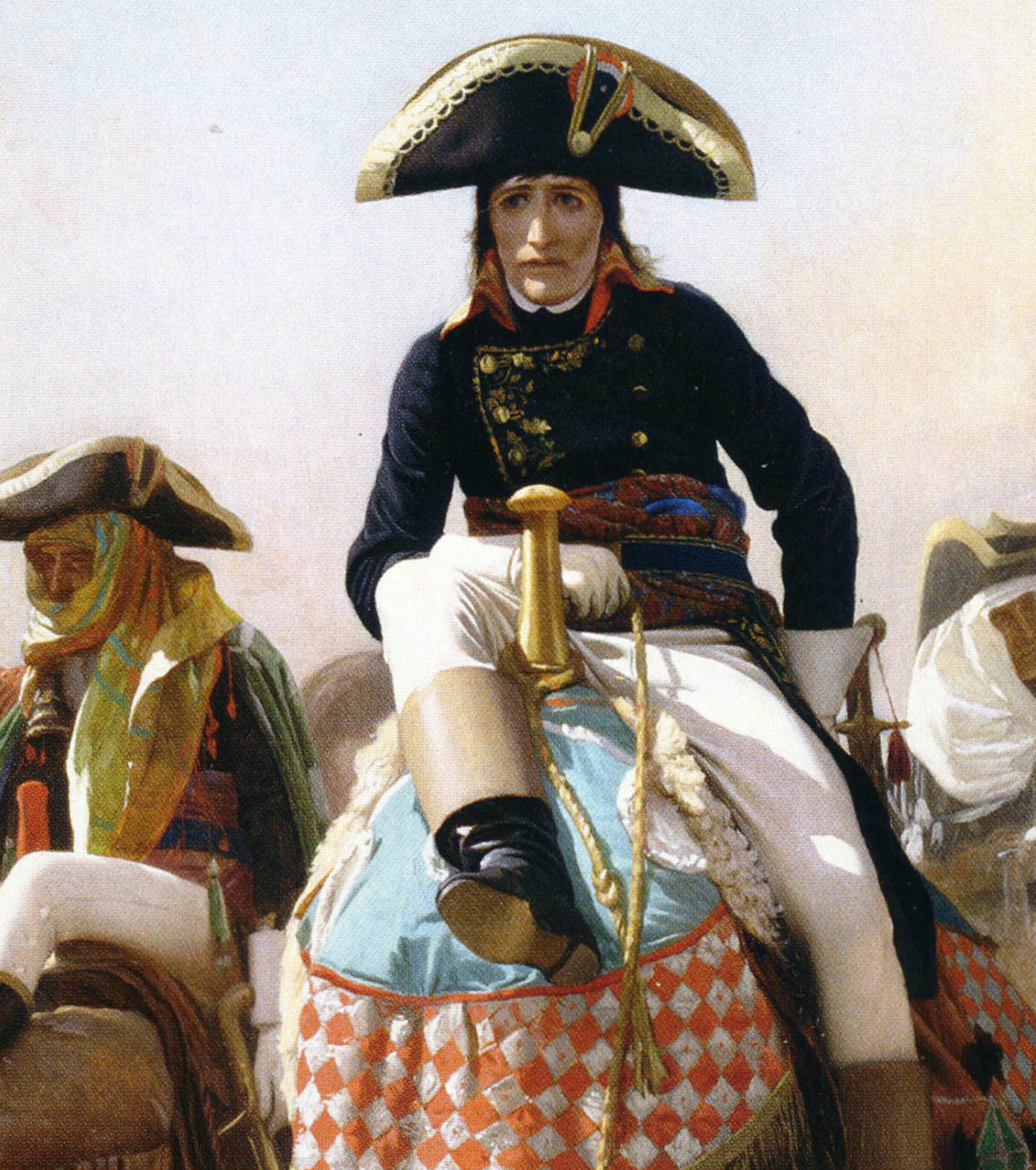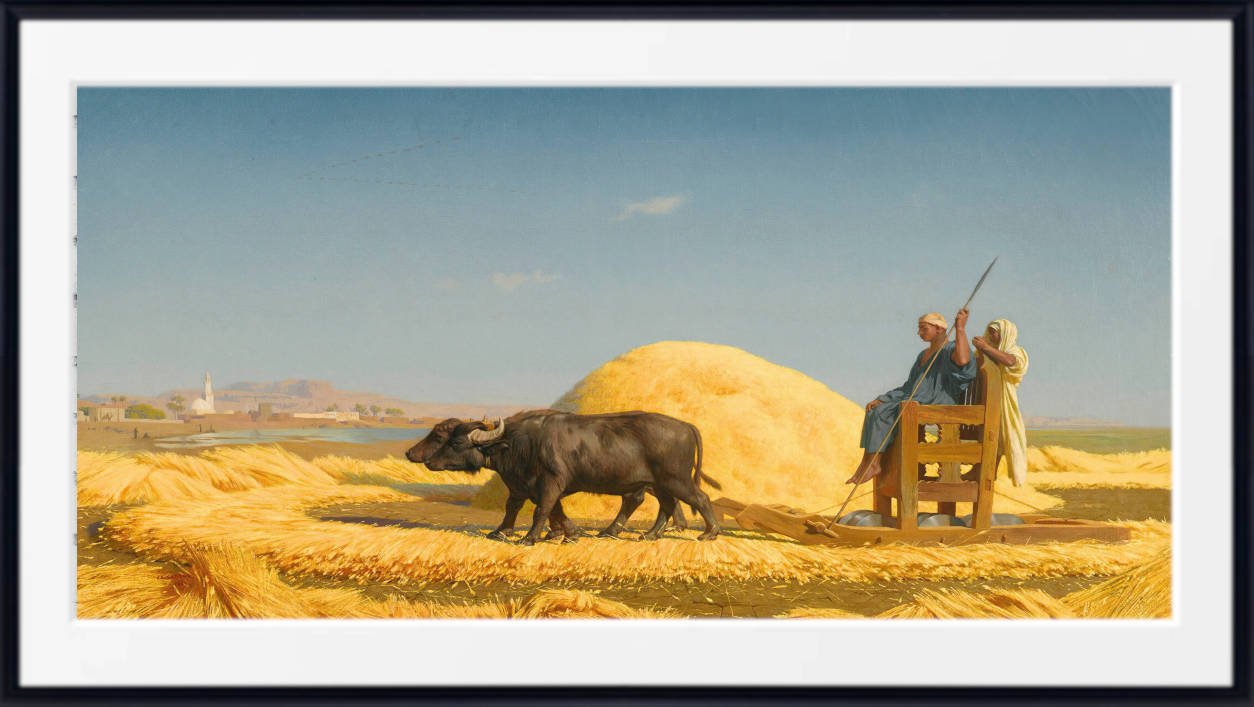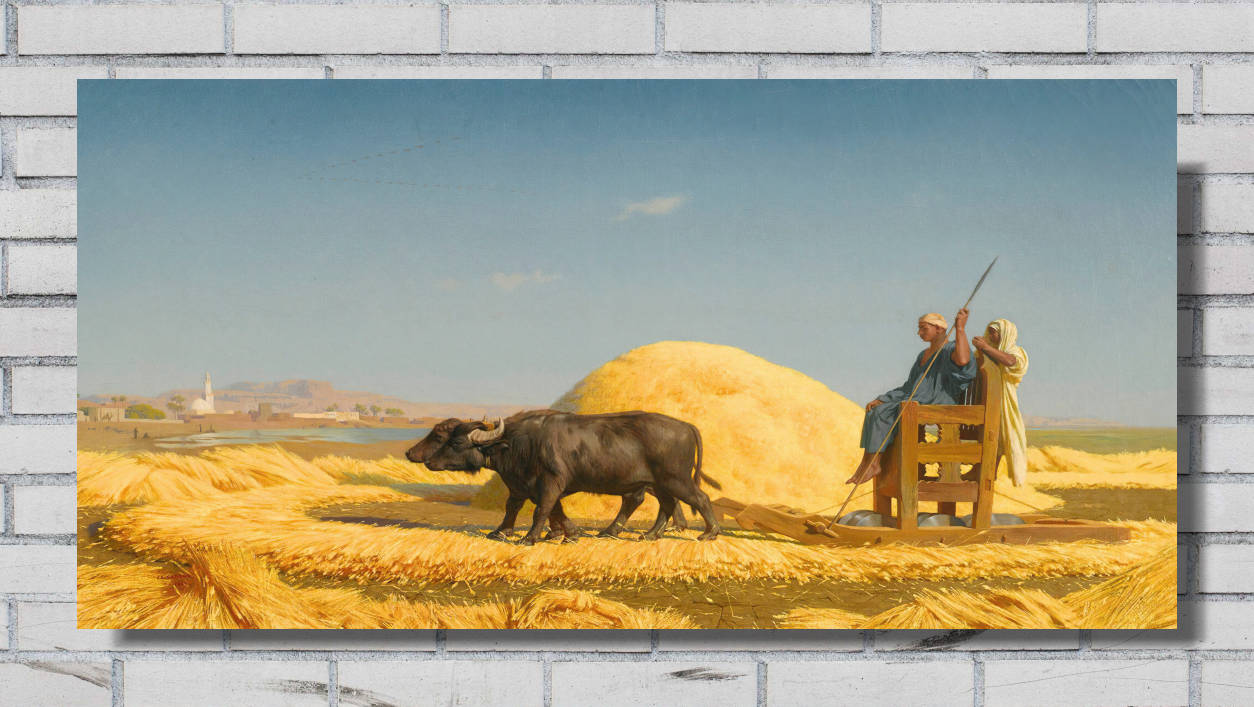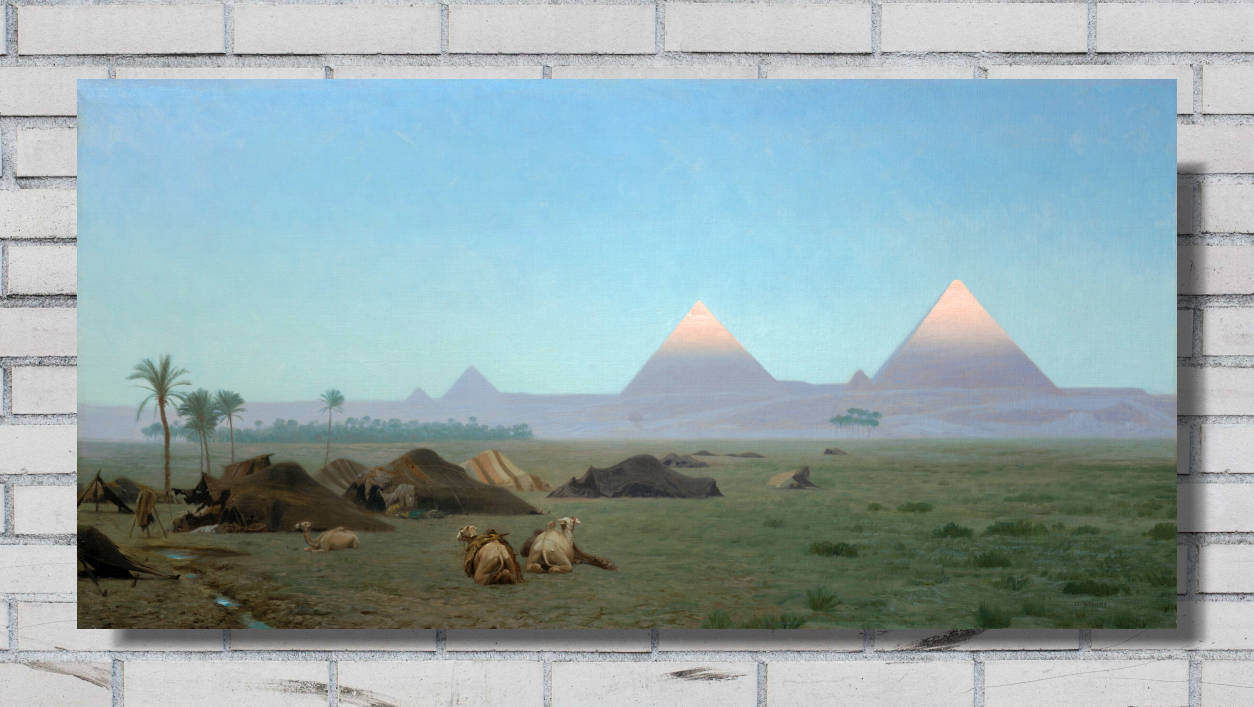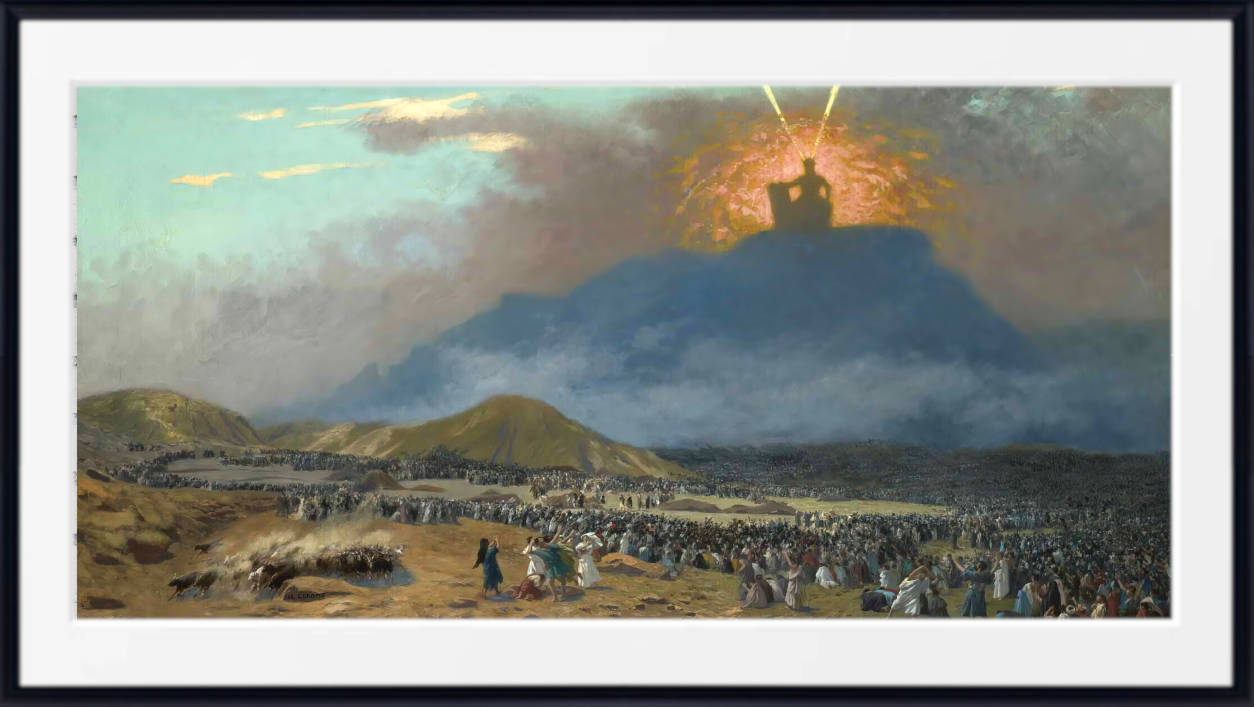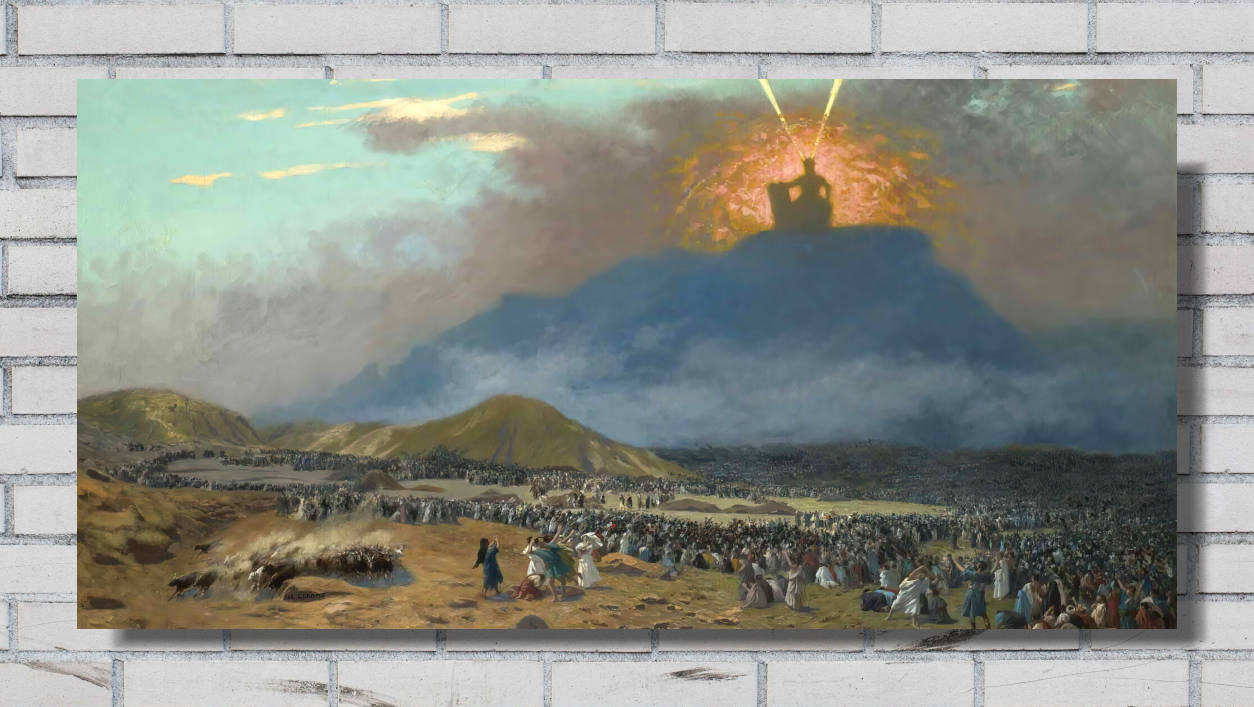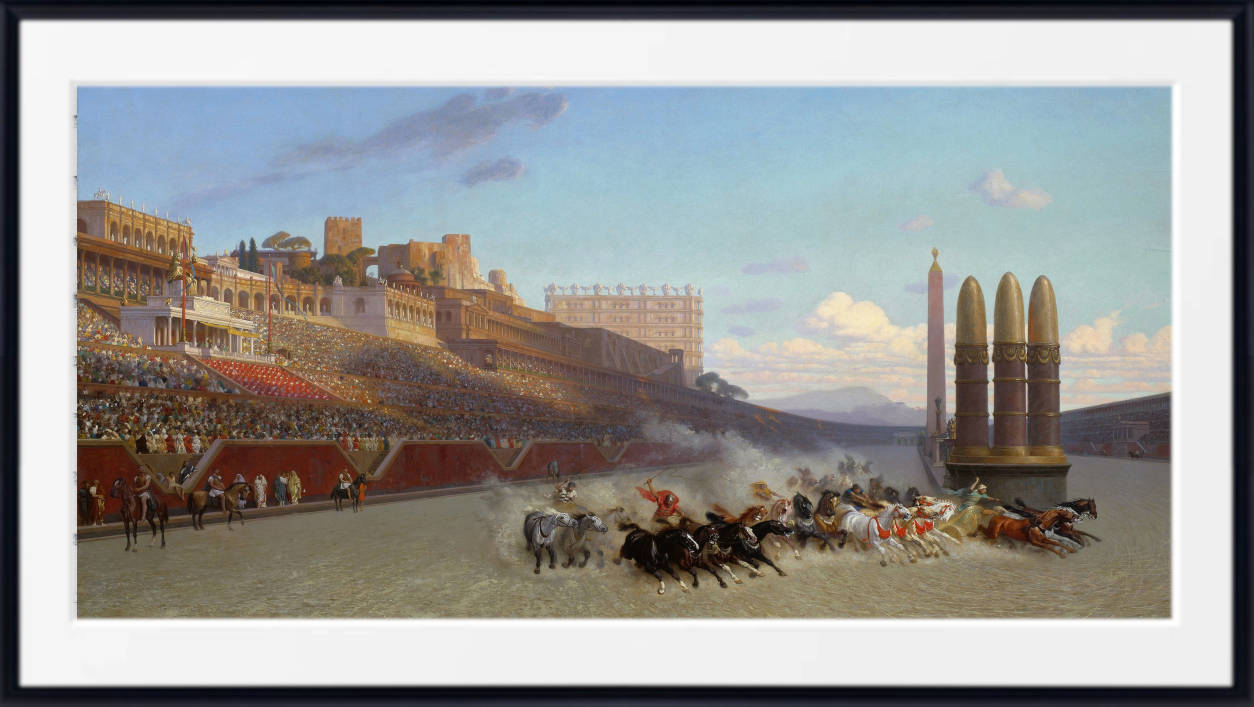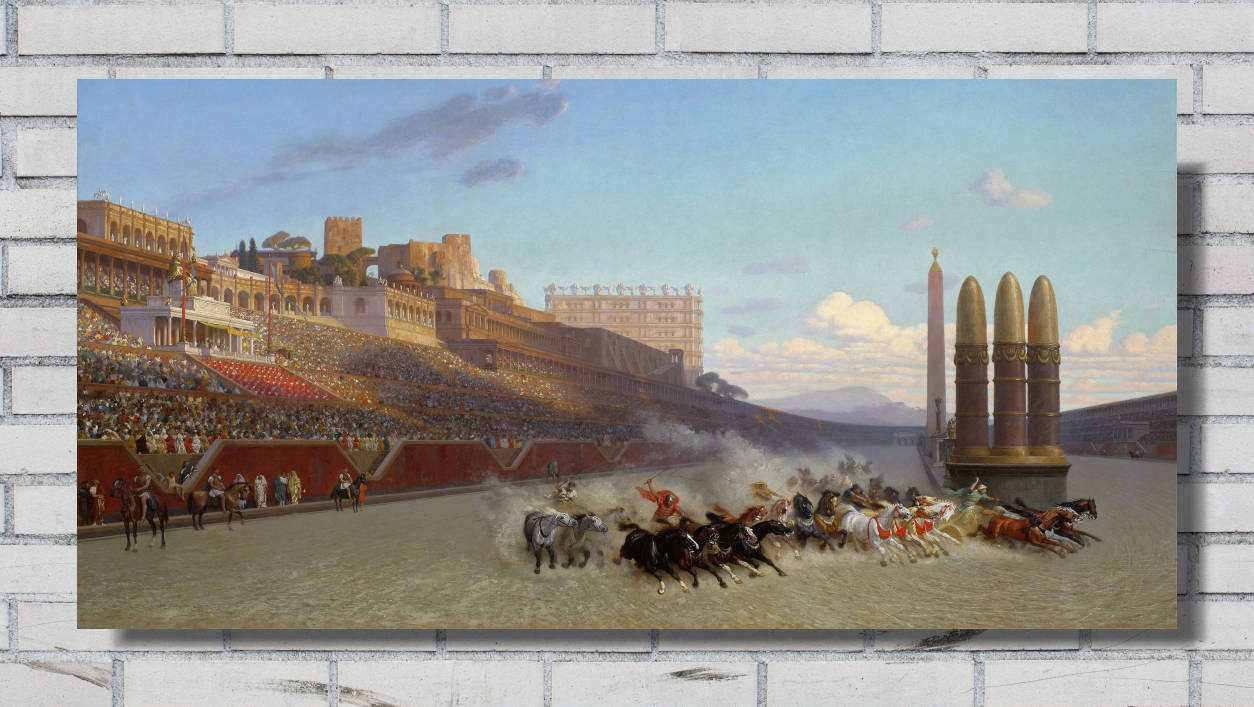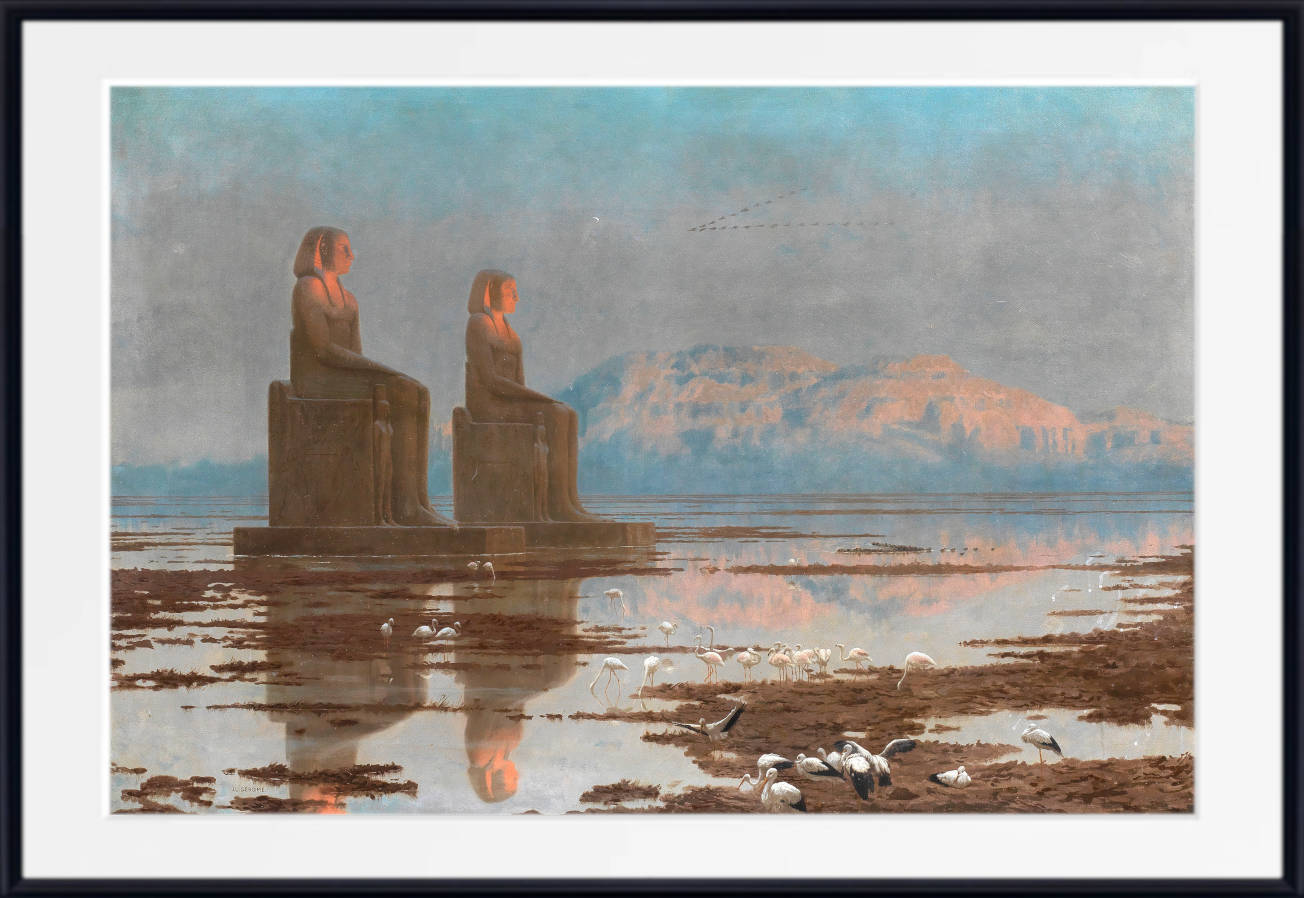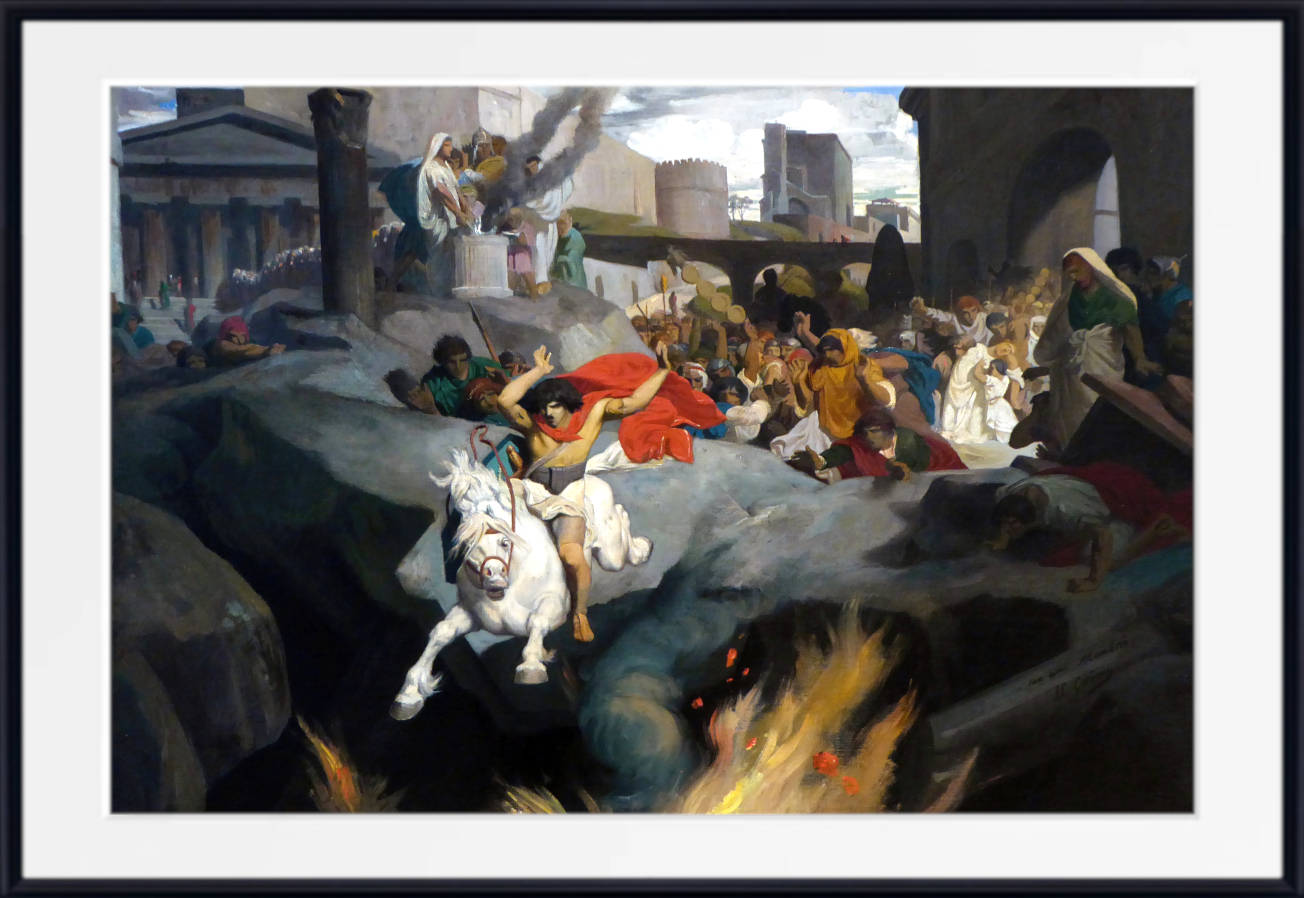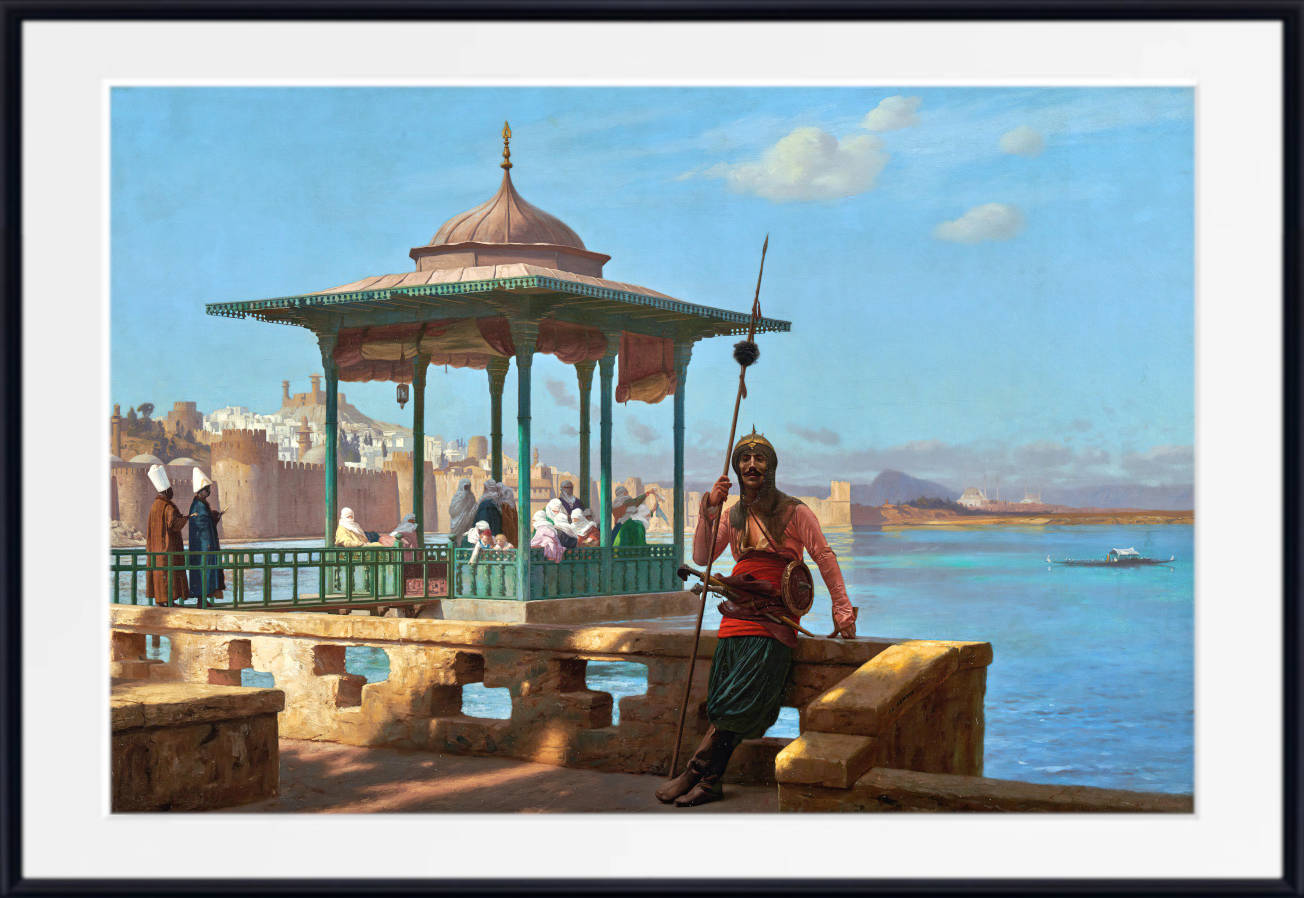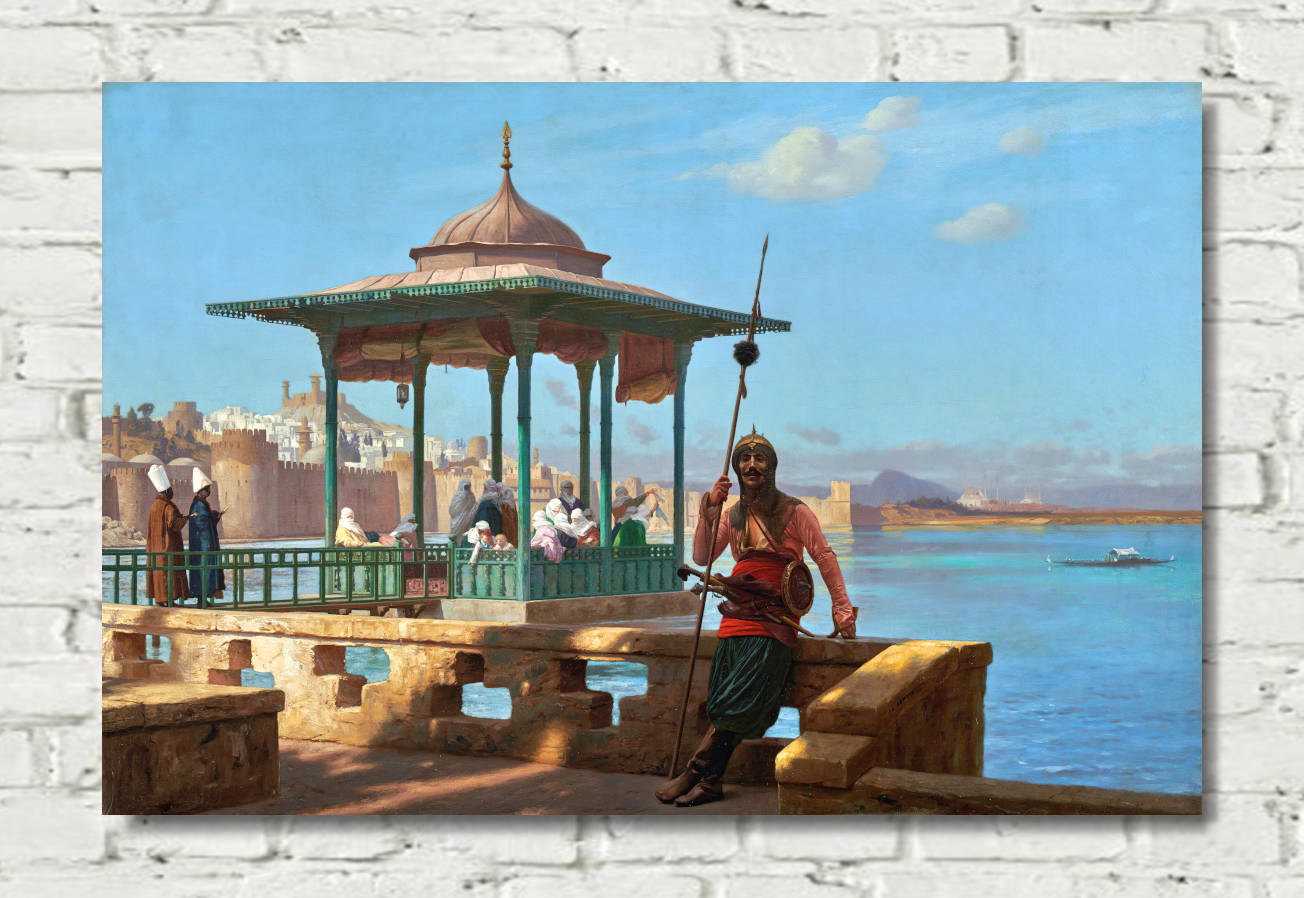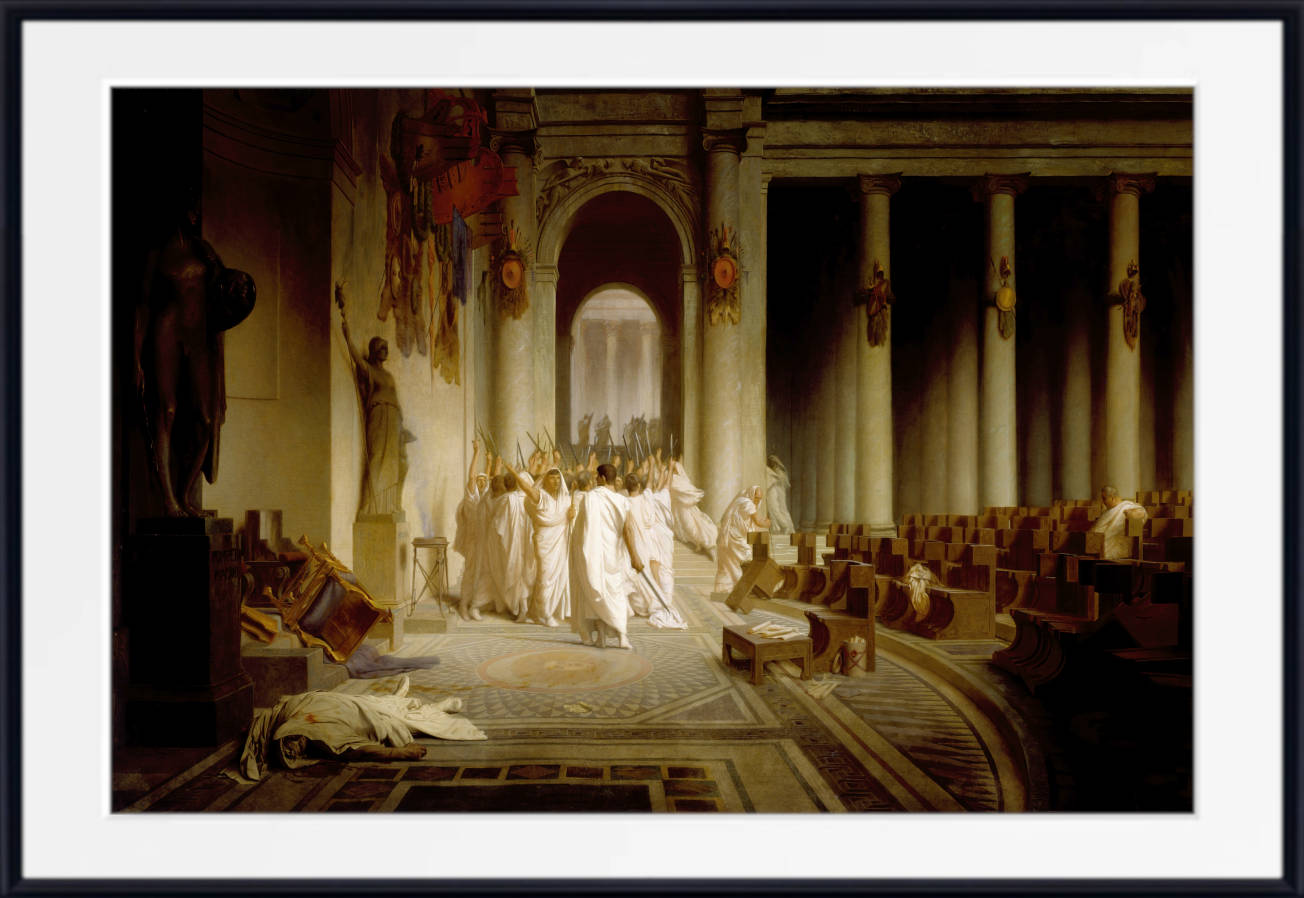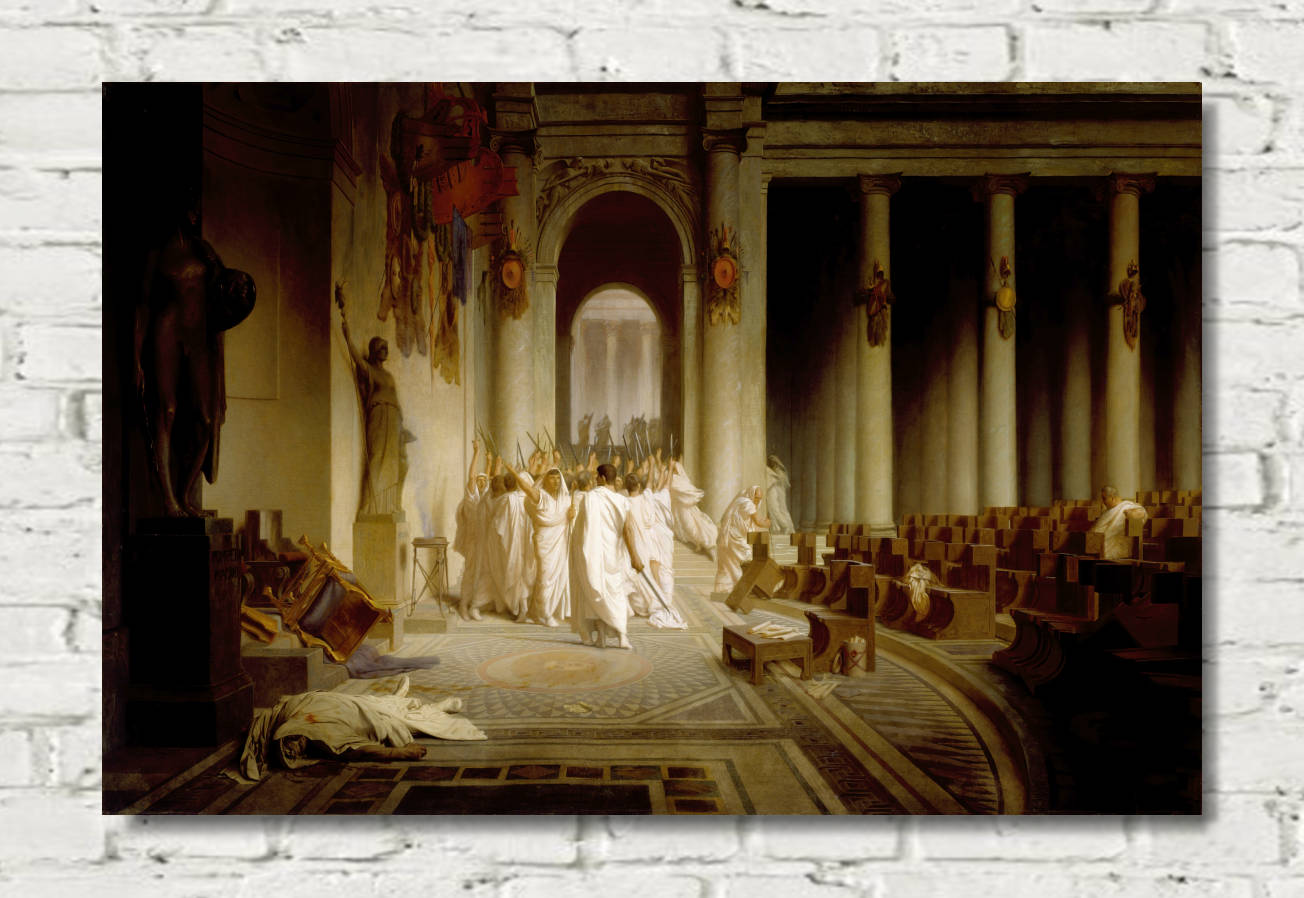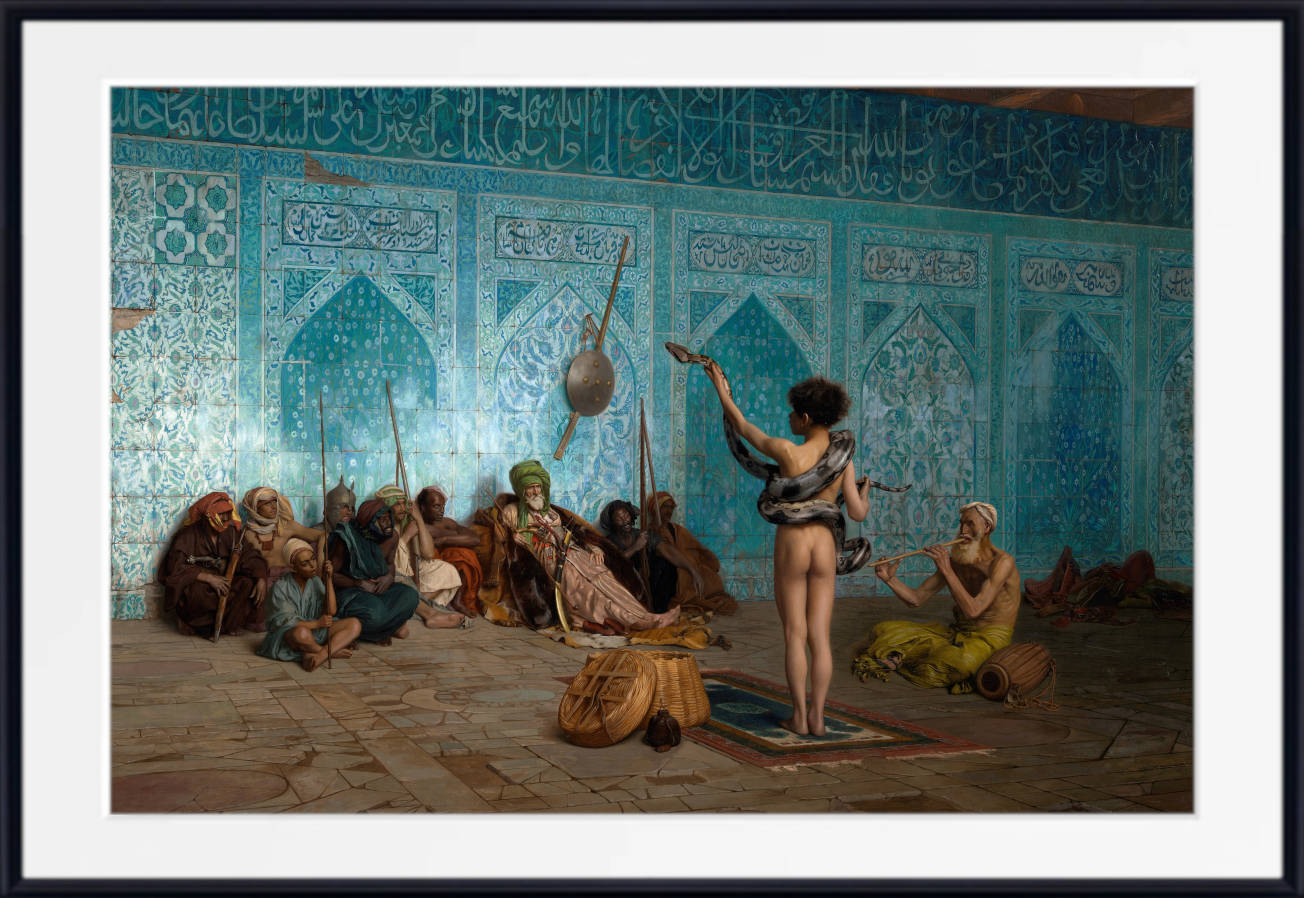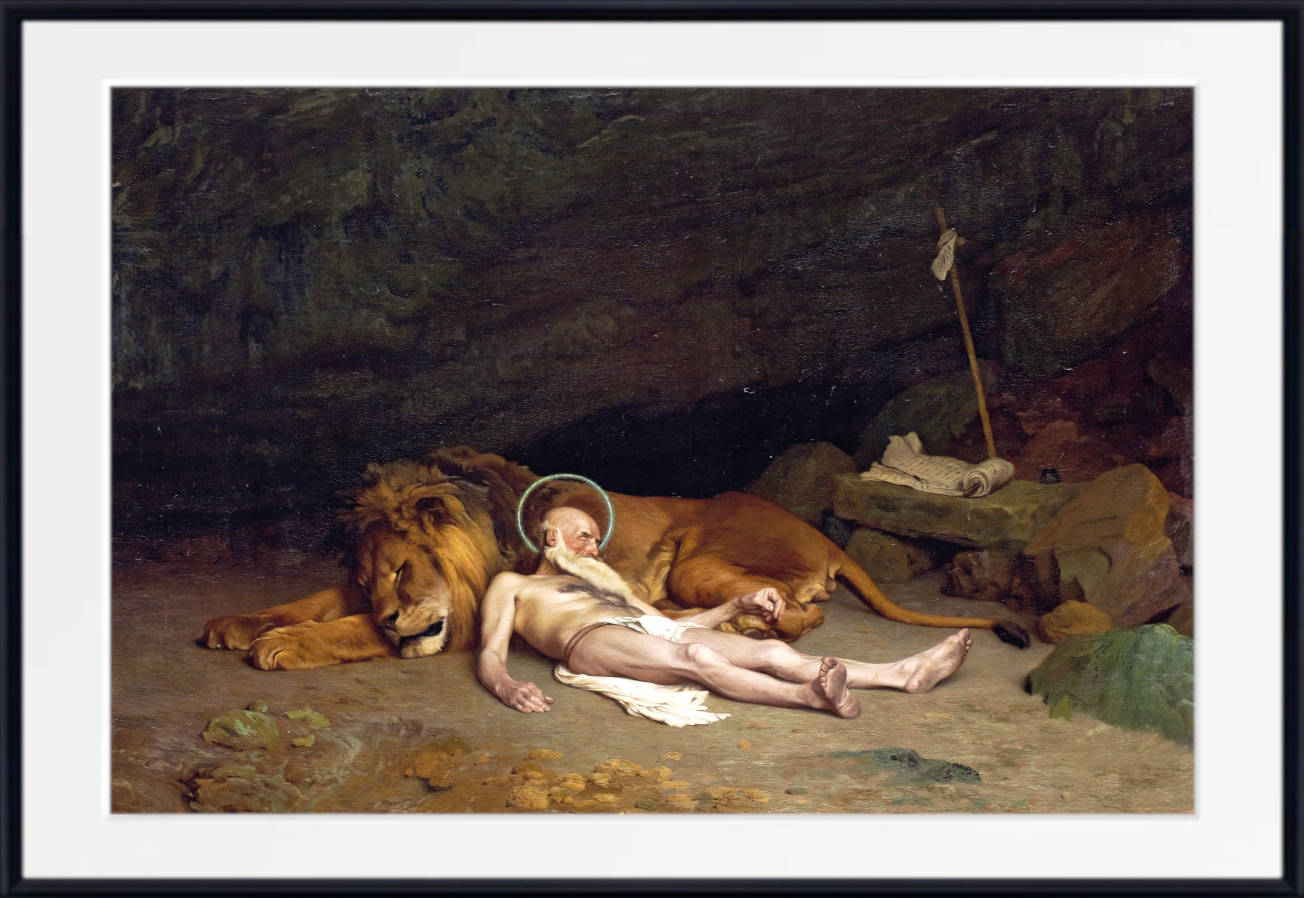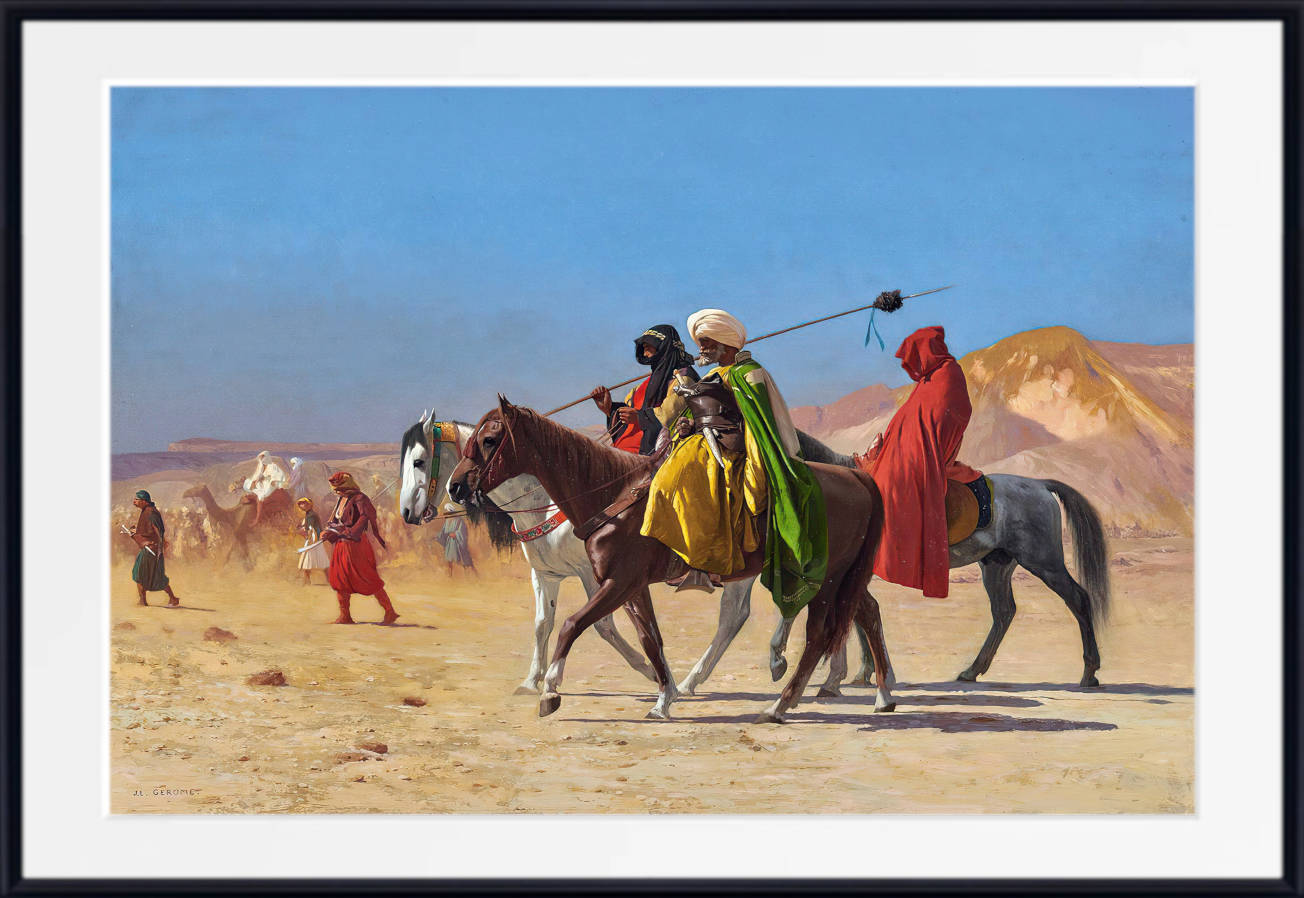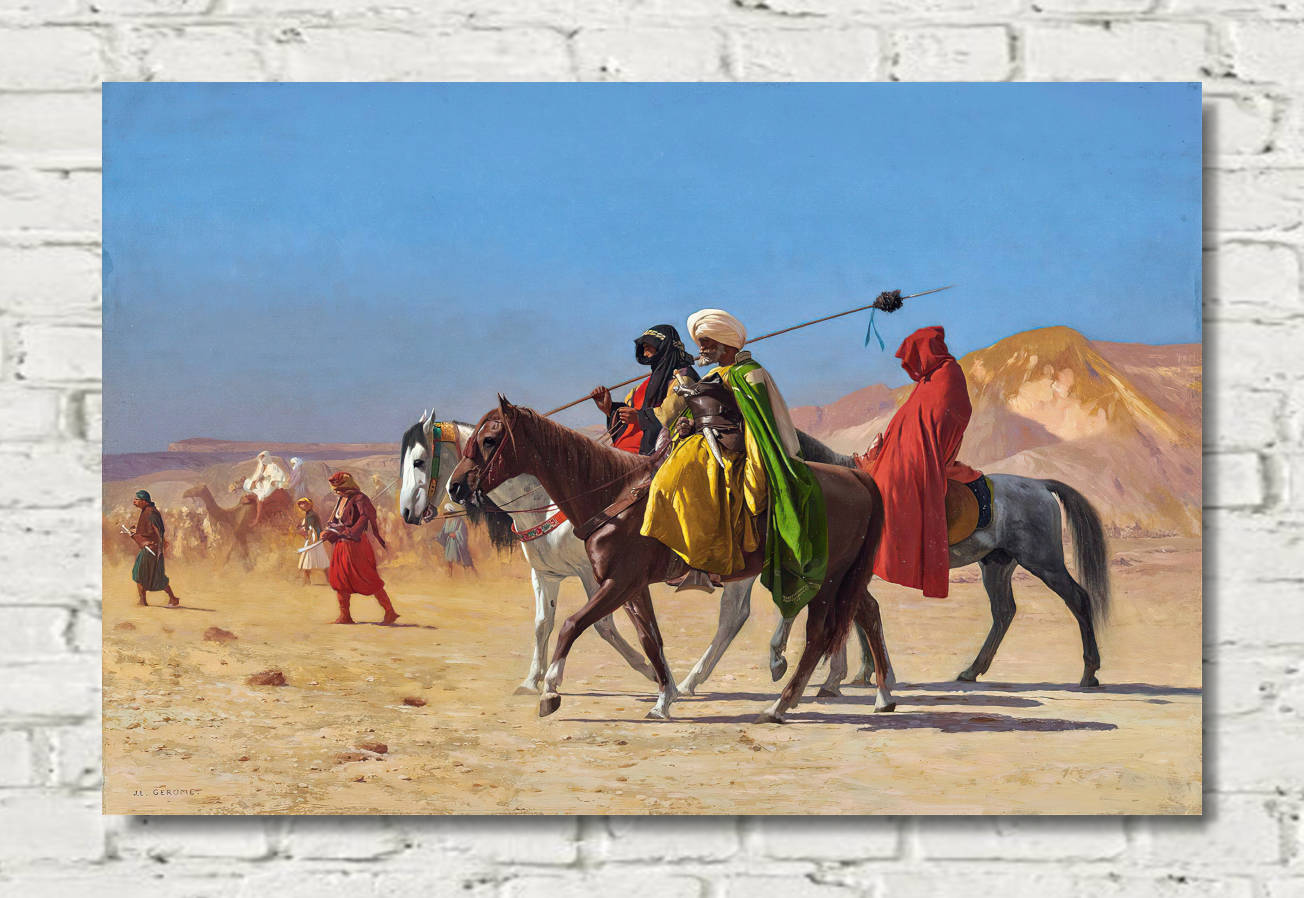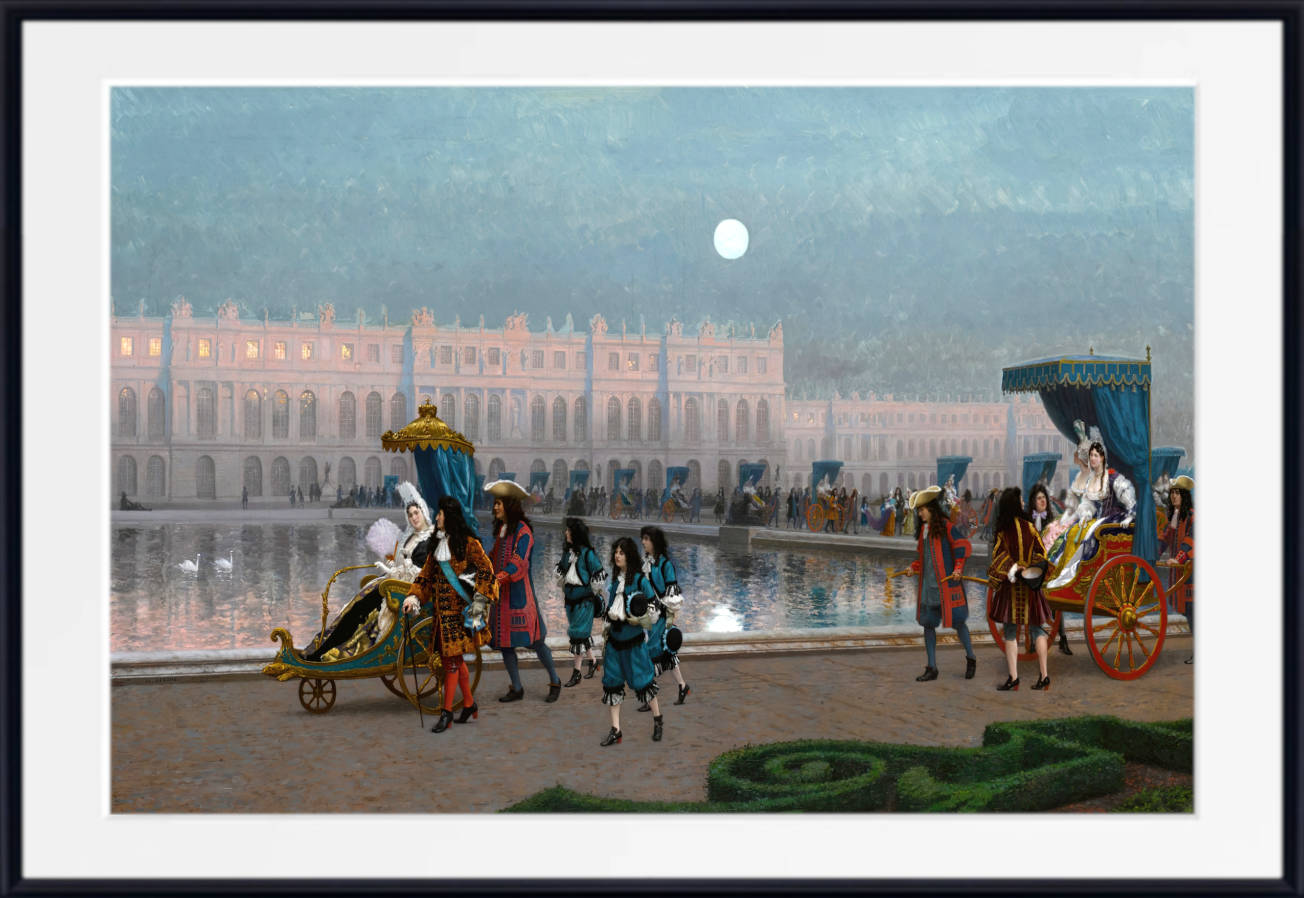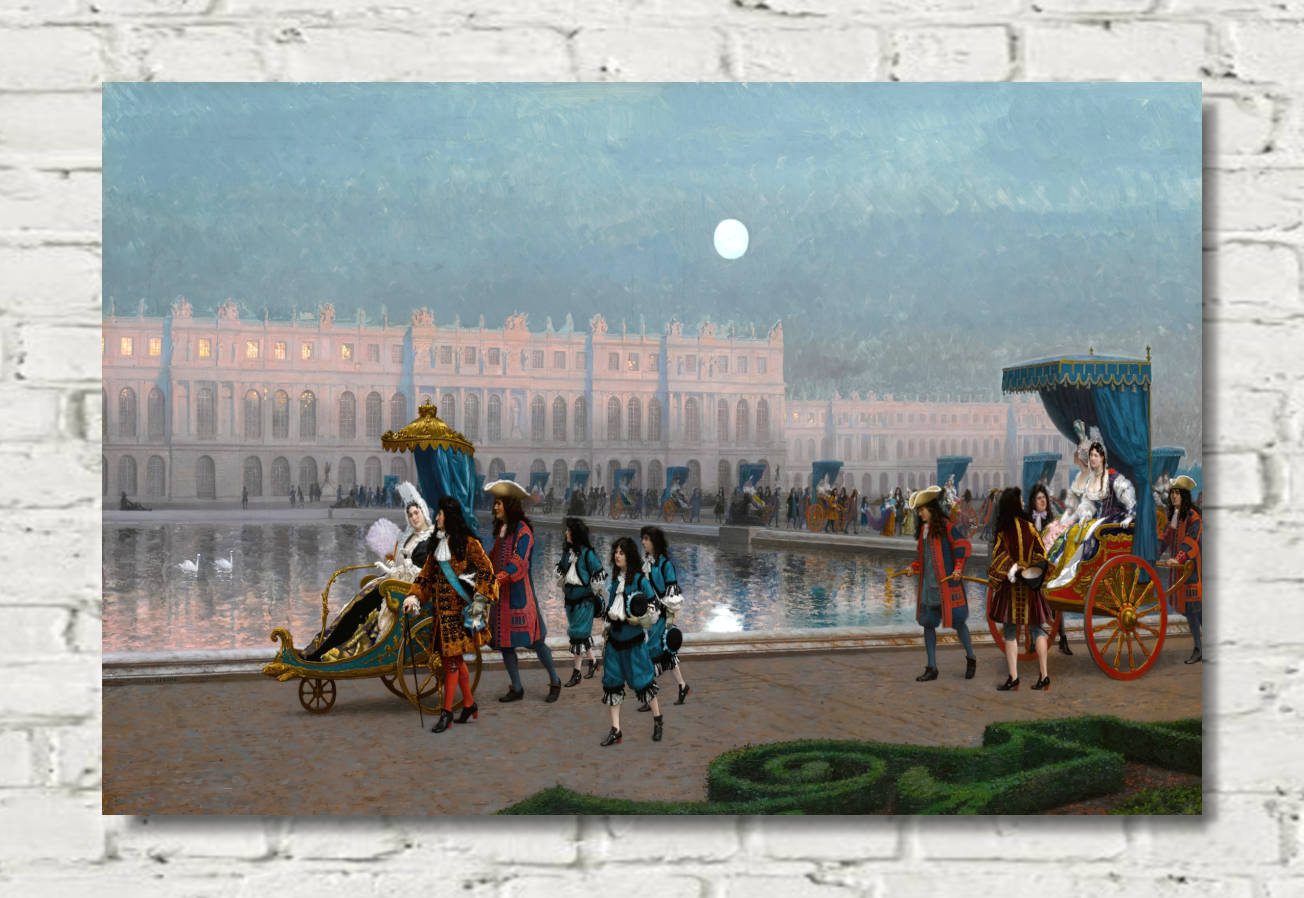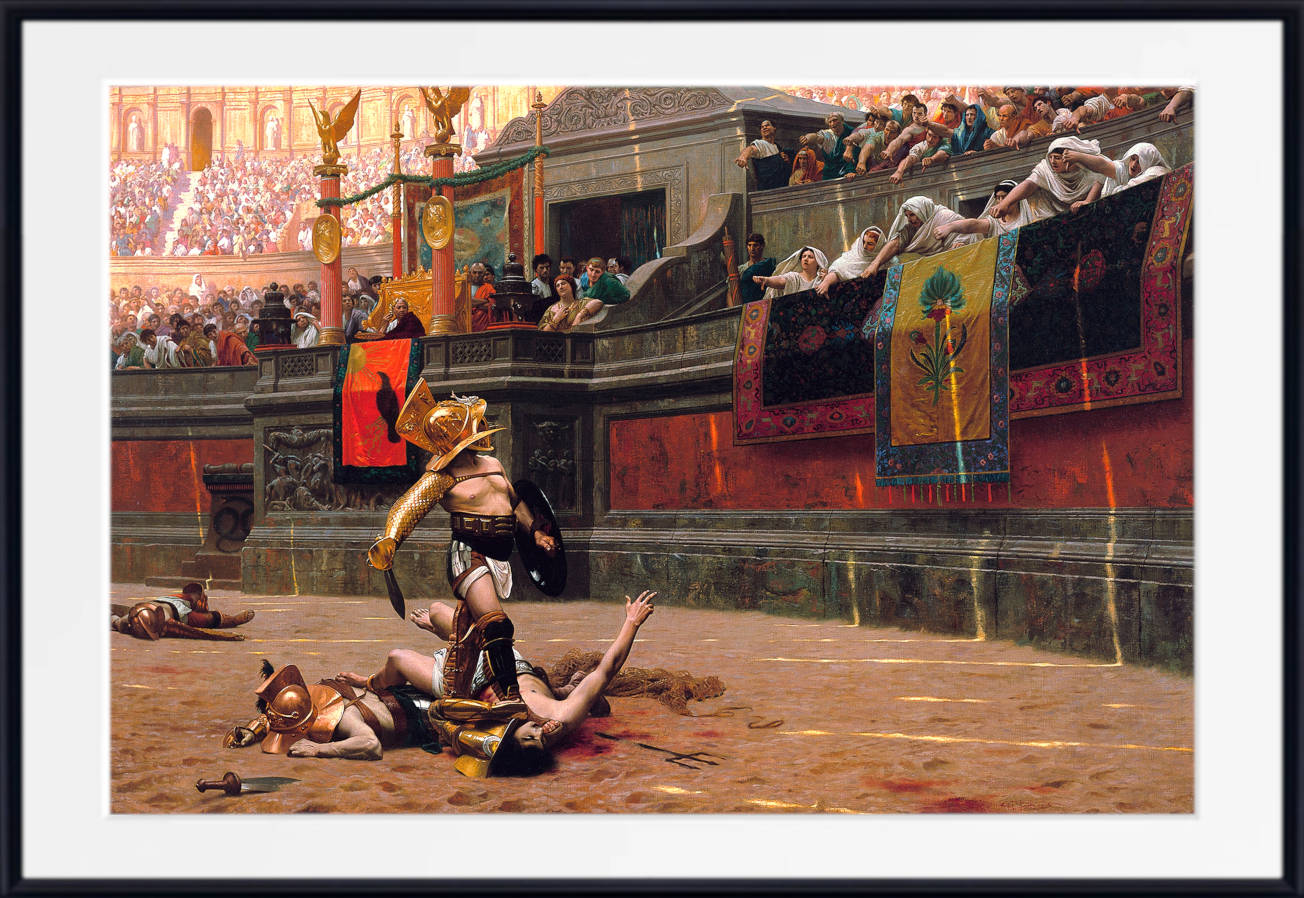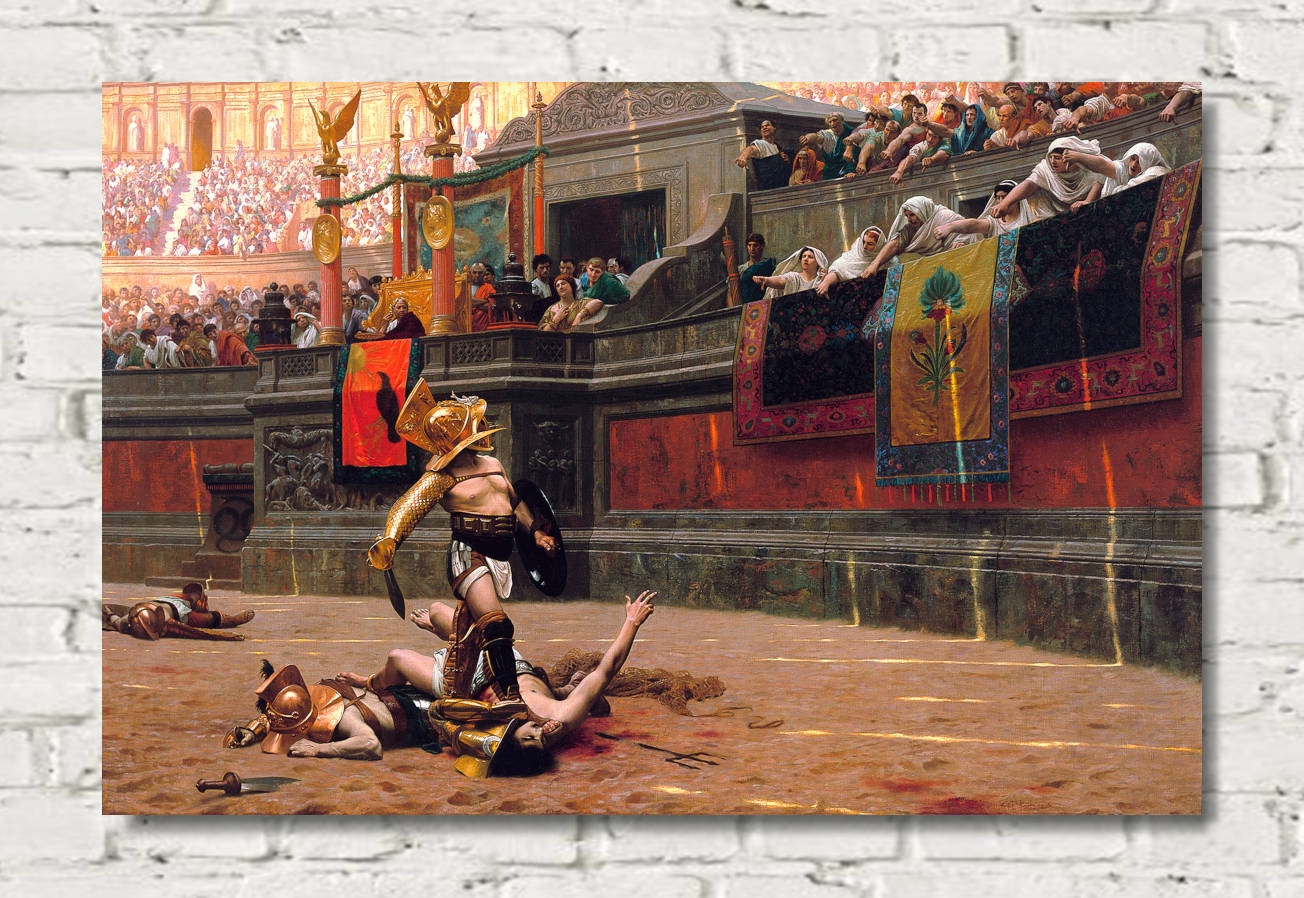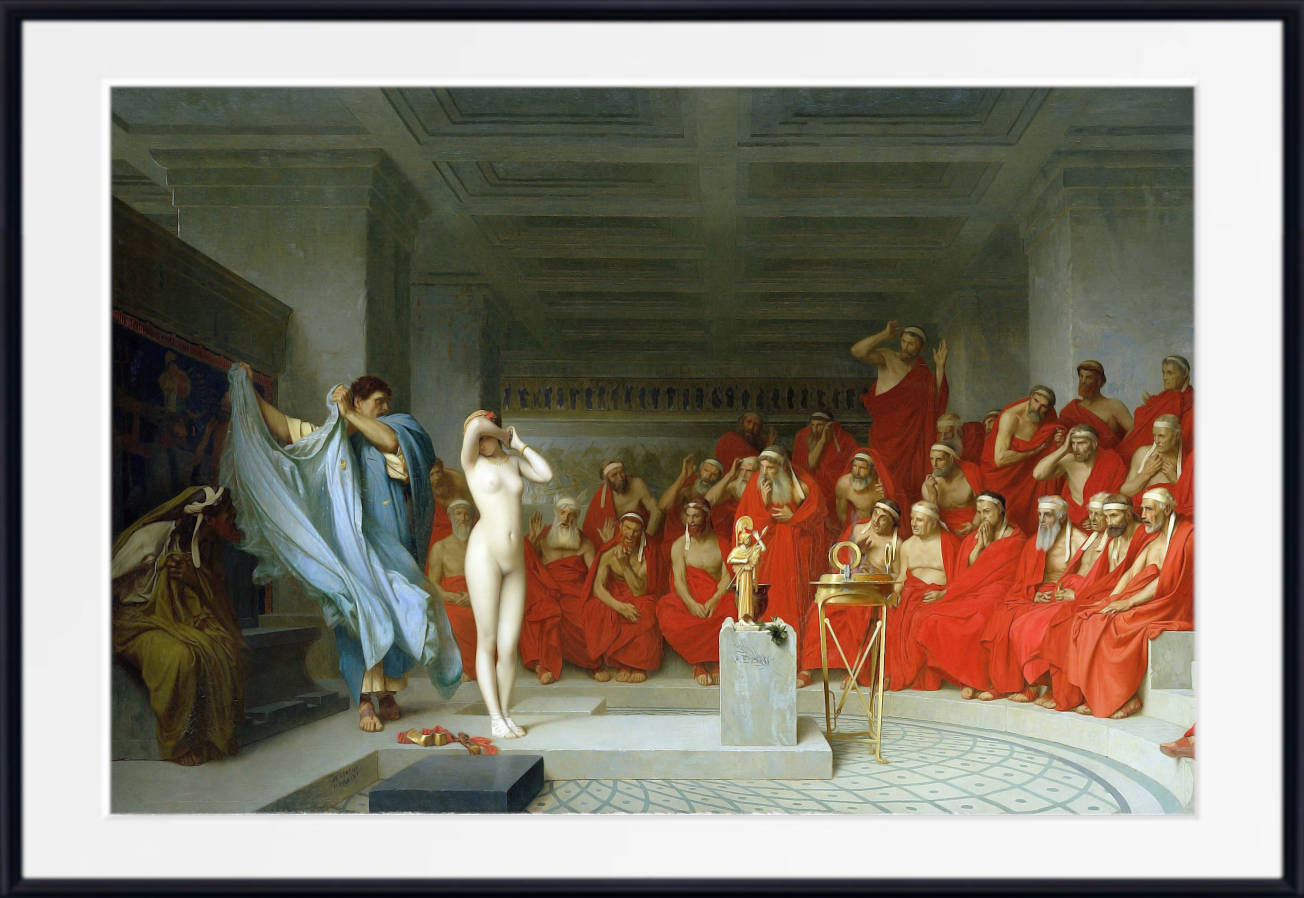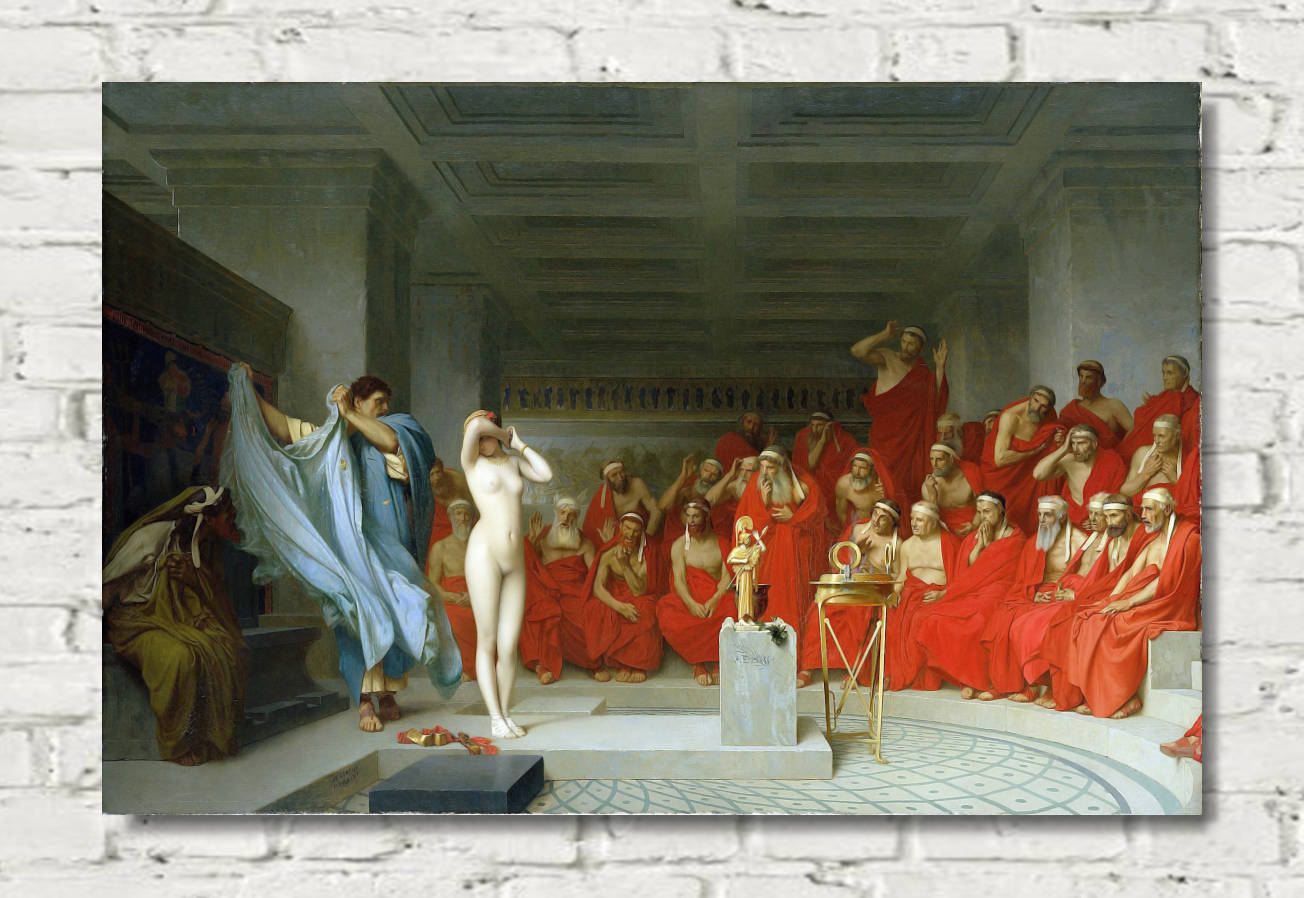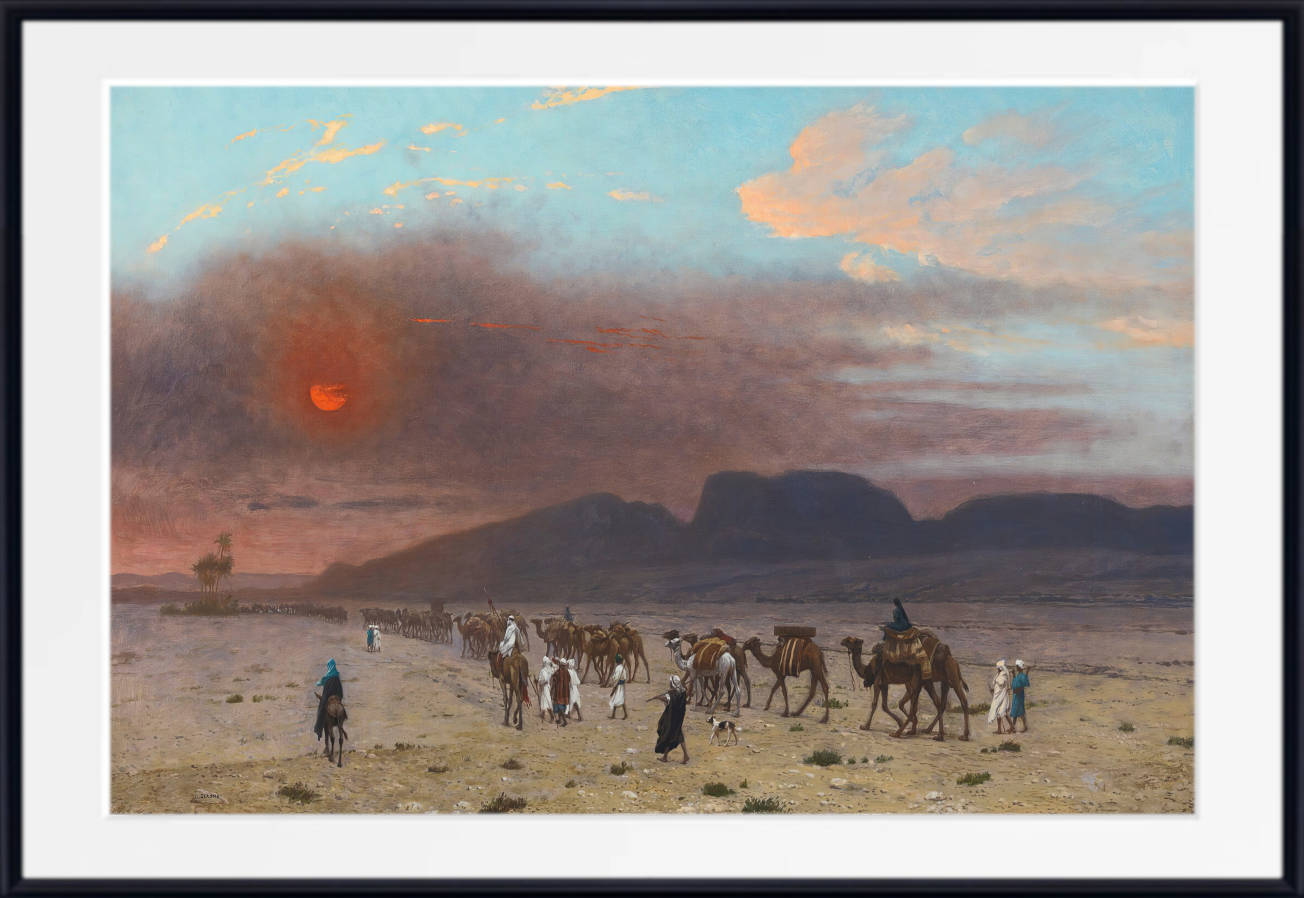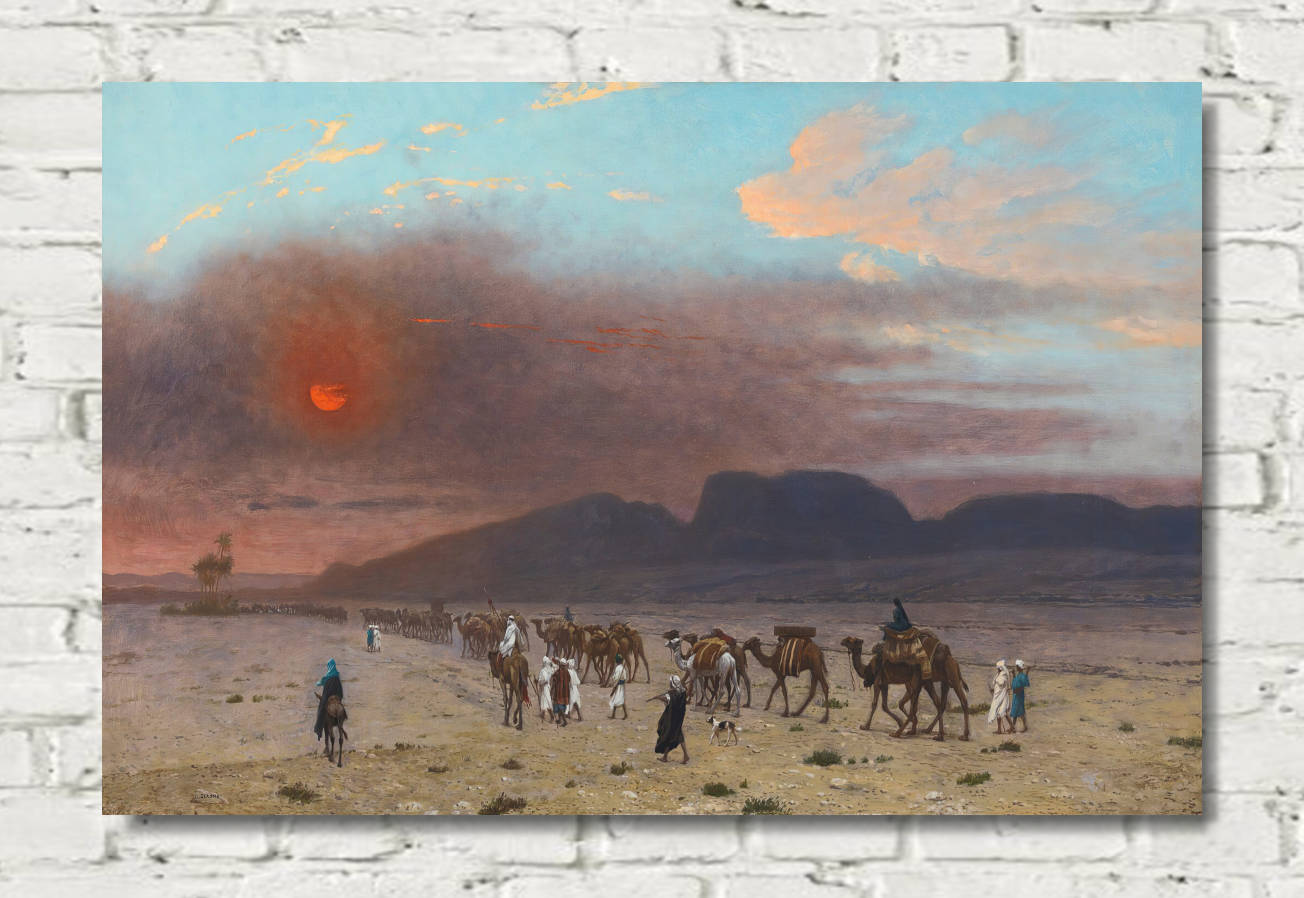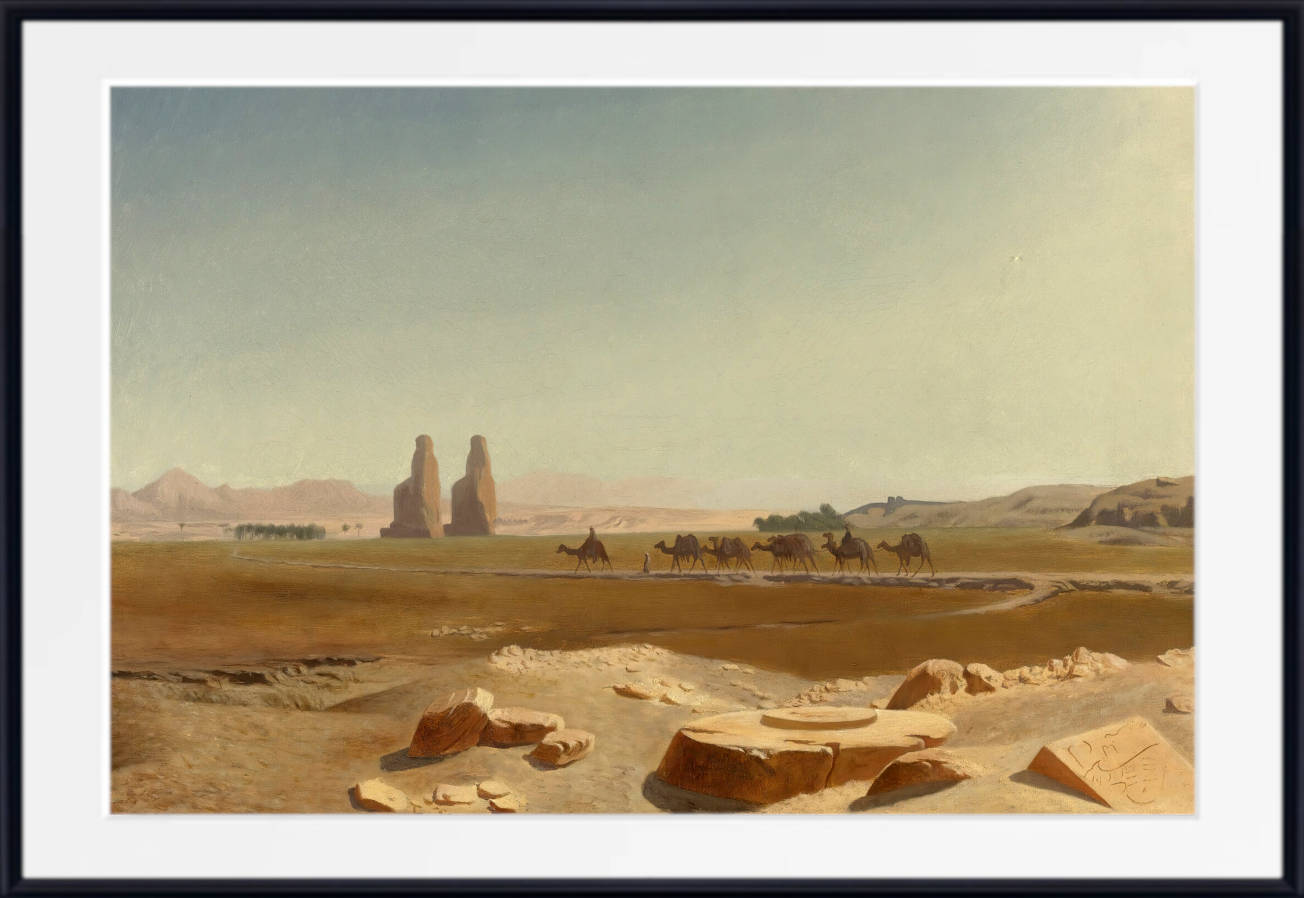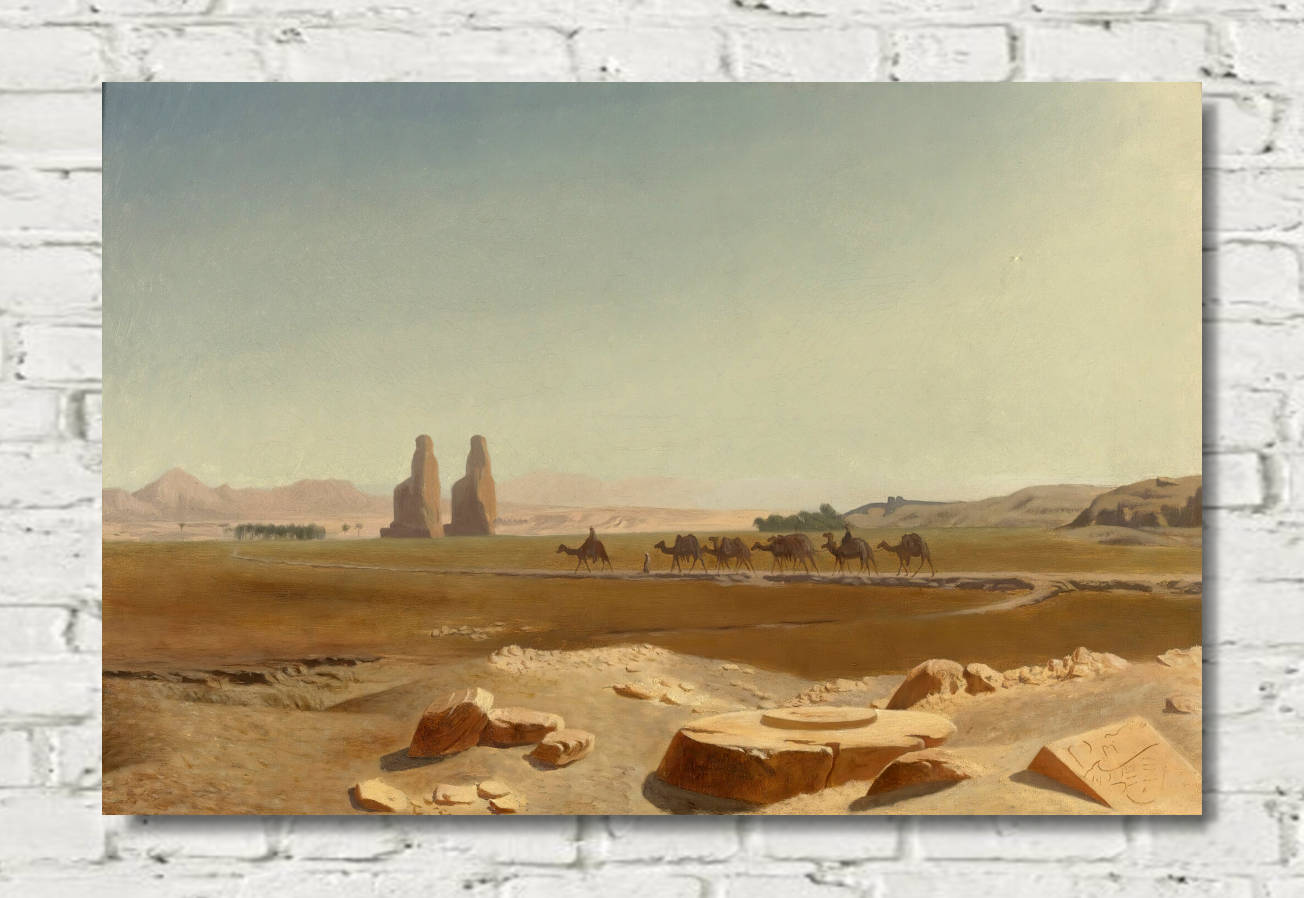Bonaparte Before the Sphinx (1886)
Jean-Léon Gérôme (1824 – 1904) was a French painter and sculptor in the style now known as academicism. His paintings were widely reproduced, so much so that he was arguably the world's most famous living artist by 1880. The range of his oeuvre included historical painting, Greek mythology, Orientalism, portraits, and other subjects, bringing the academic painting tradition to an artistic climax. He is considered one of the most important painters from this academic period. He was also a teacher with a long list of students.

Jean-Léon Gérôme was born at Vesoul, Haute-Saône. He went to Paris in 1840 where he studied under Paul Delaroche, whom he accompanied to Italy in 1843. He visited Florence, Rome, the Vatican and Pompeii. On his return to Paris in 1844, like many students of Delaroche, he joined the atelier of Charles Gleyre and studied there for a brief time. He then attended the École des Beaux-Arts. In 1846 he tried to enter the prestigious Prix de Rome, but failed in the final stage because his figure drawing was inadequate.
His painting The Cock Fight (1846) is an academic exercise depicting a nude young man and a very thinly draped young woman with two fighting cocks, with the Bay of Naples in the background. He sent this painting to the Paris Salon of 1847, where it gained him a third-class medal. This work was seen as the epitome of the Neo-Grec movement that had formed out of Gleyre's studio (including Henri-Pierre Picou and Jean-Louis Hamon), and was championed by the influential French critic Théophile Gautier, whose review made Gérôme famous and effectively launched his career.
Gérôme abandoned his dream of winning the Prix de Rome and took advantage of his sudden success. His paintings The Virgin, the Infant Jesus and Saint John and Anacreon, Bacchus and Eros took a second-class medal at the Paris Salon in 1848. In 1849, he produced the paintings Michelangelo (also called In his Studio) and A Portrait of a Lady.
Selected Artworks of Jean-Léon Gérôme
The Age of Augustus, the Birth of Christ
In 1852, Gérôme received a commission to paint a large mural of an allegorical subject of his choosing. The Age of Augustus, the Birth of Christ, which combined the birth of Christ with conquered nations paying homage to Augustus, may have been intended to flatter Napoleon III, whose government commissioned the mural and who was identified as a new Augustus. A considerable down payment enabled Gérôme to travel and research, first in 1853 to Constantinople, together with the actor Edmond Got, and in 1854 to Greece and Turkey and the shores of the Danube, where he was present at a concert of Russian conscripts making music under the threat of a lash.

Pool in a Harem (1875)
Orientalism
In 1856, Gérôme visited Egypt for the first time. His itinerary followed the classic Grand Tour of the Near East, up the Nile to Cairo, across to Faiyum, then further up the Nile to Abu Simbel, then back to Cairo, across the Sinai Peninsula through Sinai and up the Wadi el-Araba to Jerusalem and finally Damascus. This heralded the start of many Orientalist paintings depicting Arab religious practice, genre scenes and North African landscapes.
Among these are paintings in which the Oriental setting is combined with depictions of female nudity. The Slave Market, The Bath, Pool in a Harem, and similar subjects were works of imagination in which Gérôme combined accurately observed Middle Eastern architectural details with idealized nudes painted in his Paris studio.

The Bath (1885)

The Slave Market (1871)
Classical subjects
In 1858, he helped to decorate the Paris house of Prince Napoléon Joseph Charles Paul Bonaparte in the Pompeian style. The prince had bought his Greek Interior (1850), a depiction of a brothel also in the Pompeian manner. In Ave Caesar! Morituri te Salutant, shown at the Salon of 1859, Gérôme returned to the painting of Classical subjects, but the picture failed to interest the public. King Candaules (1859) and Phryne Before the Areopagus and Socrates Seeking Alcibiades in the House of Aspasia (both 1861) gave rise to some scandal by reason of the subjects selected by the painter, and inspired bitter attacks by Paul de Saint-Victor and Maxime Du Camp. Also at the 1861 Salon he exhibited Egyptian Chopping Straw and Rembrandt Biting an Etching, two very minutely finished works.
Bonaparte
Gérôme produced several paintings showing Napoleon in Egypt, including a highly detailed and intricate version of General Bonaparte and his Staff in Egypt (1867). The French Campaign in Egypt and Syria had been in 1798-1801, so this was still relatively recent history, even when viewed from the distance of the final years of the Second Empire.

Napoleon in Egypt (1867)
The Tulip Folly

The Tulip Folly (1882)
The tulip flower was originally imported from Turkey, and became very popular in the Netherlands during the early 17th century. The Dutch cultivated them to produce varieties of different colours, petal and leaf patterns, and these became associated with wealth and status. By 1634, the value of tulips had become very high,completely out of proportion to their real worth. Certain varieties in particular became highly sought-after, and the subject of financial speculation. Eventually the bubble burst, prices collapsed, and paper fortunes vanished almost overnight. This resulted in a credit crisis and national financial problems.
Gérôme’s unusual narrative is told rather simply, and in the absence of facial expressions. A group of(government soldiers are shown in the middle distance, destroying beds of tulips, presumably in a move to manipulate the market. In the foreground, a soldier of a different group (probably an officer, given his fine ruff) stands guard over a pot containing a single rare variety of tulip. His sword is drawn ready, although pointing at the ground just by his valuable plant. This choice of narrative must have had contemporary significance. It has been suggested that it may refer to the economic crash of 1873, the first international recession resulting from market speculation, or perhaps in irony to the high value of Gérôme’s paintings when it was painted in 1882.
Truth Coming out of her Well to Shame Mankind (1896)
TBeginning in the mid-1890s, in the last decade of his life, Gérôme made at least four paintings personifying Truth as a nude woman, either thrown into, at the bottom of, or emerging from a well. The imagery arises from a translation of an aphorism of the philosopher Democritus, "Of truth we know nothing, for truth is in a well".
The nudity of the model may arise from the expression la vérité nue, "the naked truth".
At the Champs Elysées Salon of 1895, Gérôme showed a painting entitled Mendacibus et histrionibus occisa in puteo jacet alma Veritas (English: The nurturer Truth lies in a well, having been killed by liars and actors), in which he depicted "naked Truth killed by Falsehood, her body flung into a well and the mirror after her, from which flashes of light are cast as it lightens the dark abyss". At the next Salon in 1896, Gérôme showed Truth Coming Out of Her Well.
Gérôme's images of Truth and the well may have been part of his ongoing diatribe against Impressionism
Gérôme also uses the metaphor of Truth and the well to characterize the profound and irreversible influence of photography.
See the curated highlights of Jean-Léon Gérôme oeuvre.
Jean-Léon Gérôme, Artistic Legacy
Gérôme was appointed as one of the three professors at the École des Beaux-Arts. He started with sixteen students. Between 1864 and 1904, more than 2,000 students received at least some of their art education through Gérôme's atelier at the École des Beaux-Arts. Places in Gérôme's atelier were limited, keenly sought and highly competitive. Only the best students were admitted and aspirants considered it an honour to be selected. Gérôme progressed his students through drawing from antique works, casts and followed by life study with live models generally selected on the basis of their physique, but occasionally for their facial expression in a sequence of exercises known as the academie. Students drew parts of a bust before the entire bust, then parts of the live model before preparing full figures. Only when they had mastered sketching were they permitted to work in oils. They were also taught to draw clearly and correctly before consideration of tonal qualities. In his school, the floor sloped so that students had the fullest view of the model from the rear of the room. Students sat around any model in order of seniority, with the more senior students towards the rear so that they could draw the full figure, while the more junior members sat towards the front and concentrated on the bust or other part of the anatomy.
| Famous Students of Jean-Léon Gérôme |
|---|
| Mary Cassatt |
| Odilon Redon |
| Thomas Eakins |
| Edwin Lord Weeks |
| Vasily Vasilyevich Vereshchagin |
| Stanisław Chlebowski |
| Gottardo Fidele Piazzoni |
| Hosui Yamamoto |
| Laureano Barrau |
| Henri Beau |
| Osman Hamdi Bey |
| Pascal Dagnan-Bouveret |
| George Bridgman |
| Gustave-Claude-Etienne Courtois |
| Albert Edelfelt |
| Julius LeBlanc Stewart |
| George Bridgman |
| Eugène Burnand |
| Thomas Millie Dow |
| Douglas Volk |
| Paul Peel |
| Aloysius O'Kelly |

